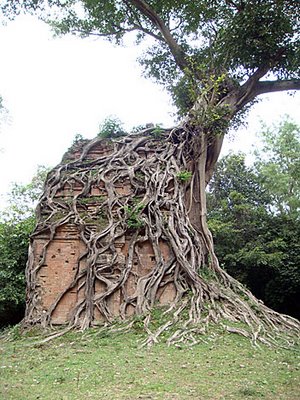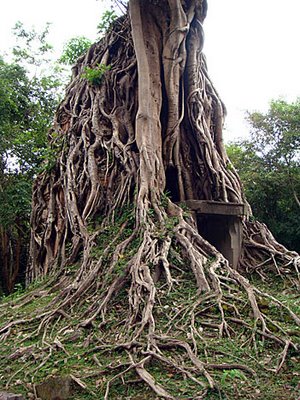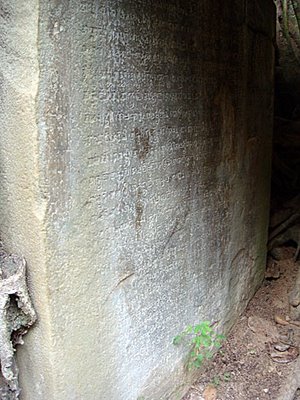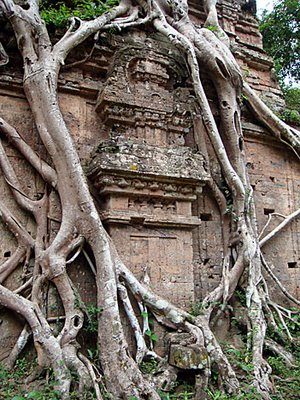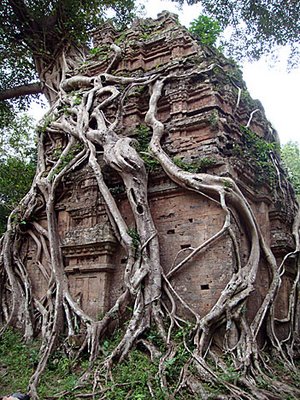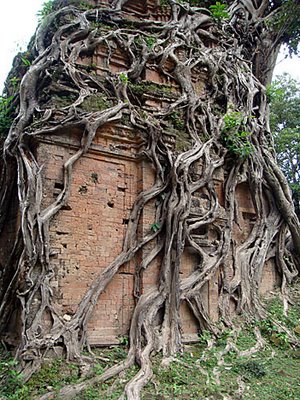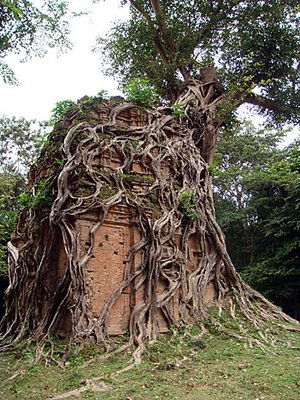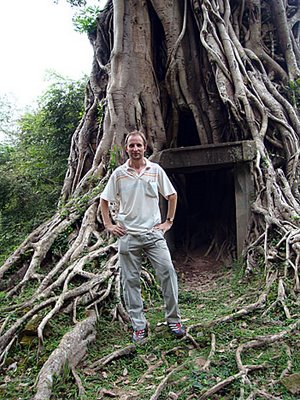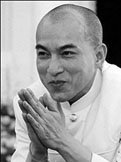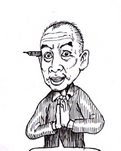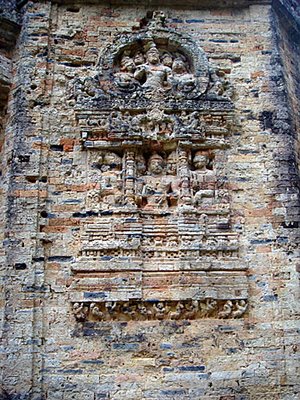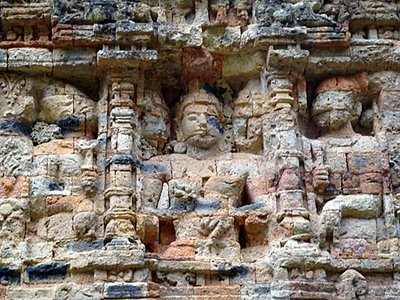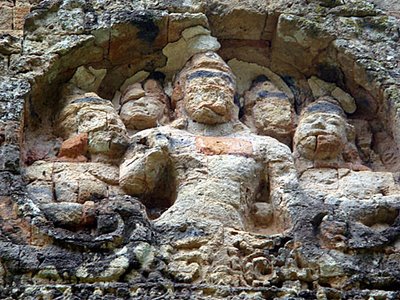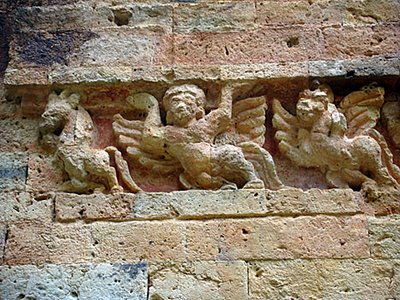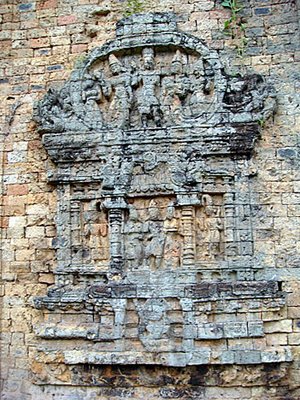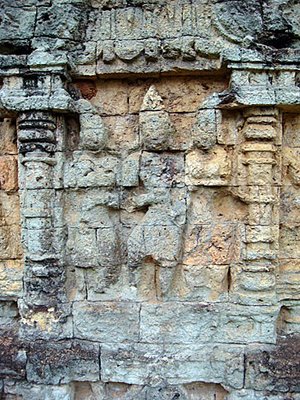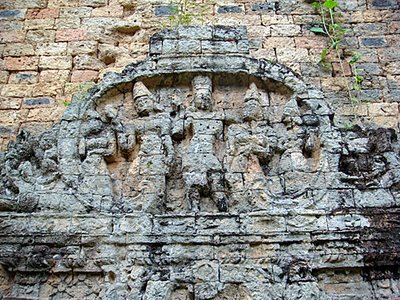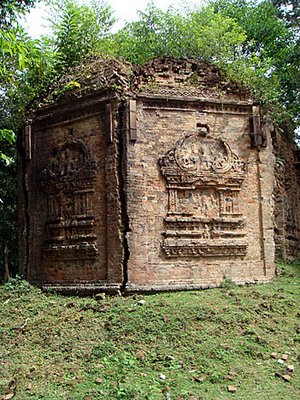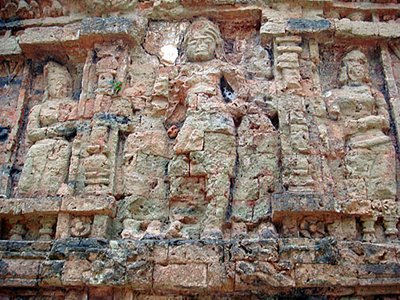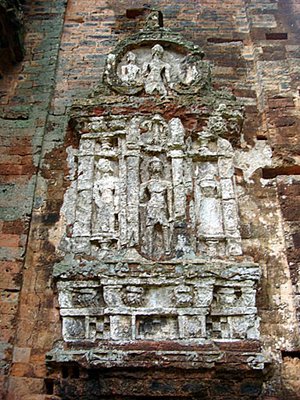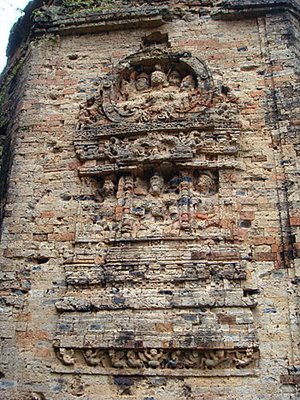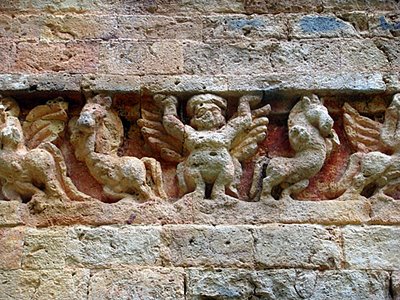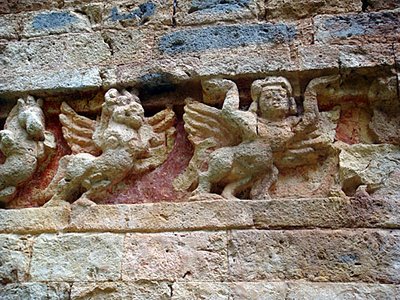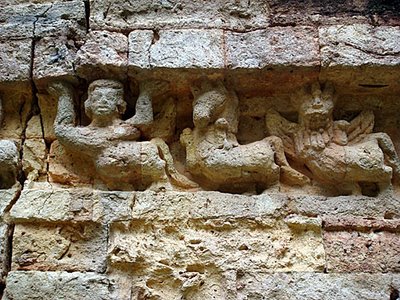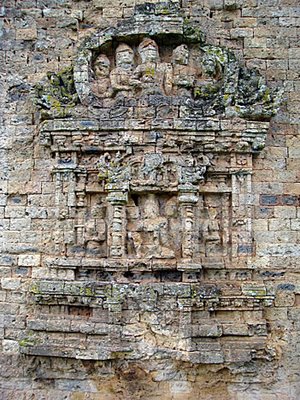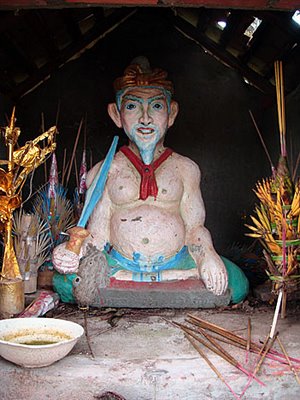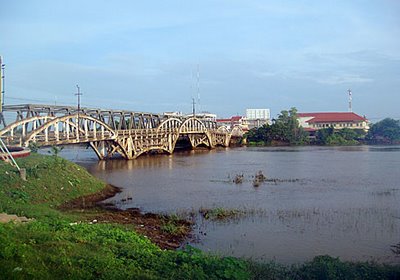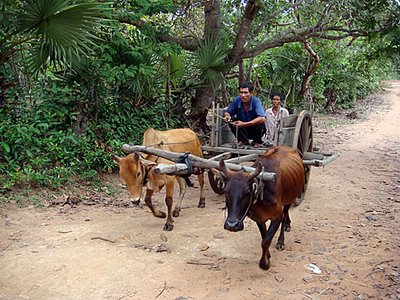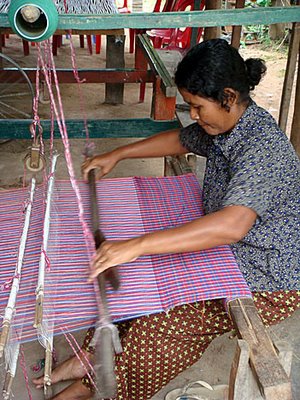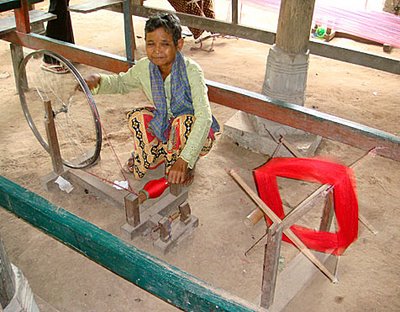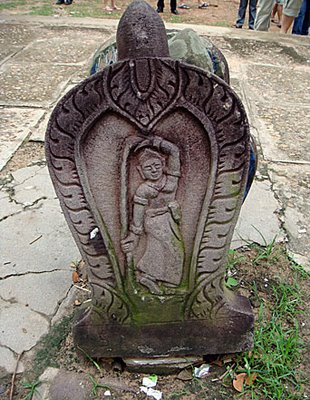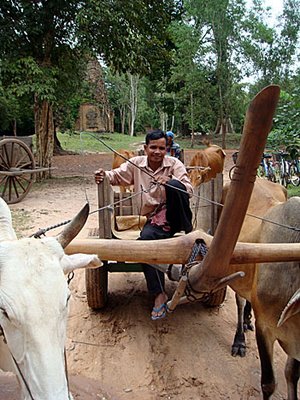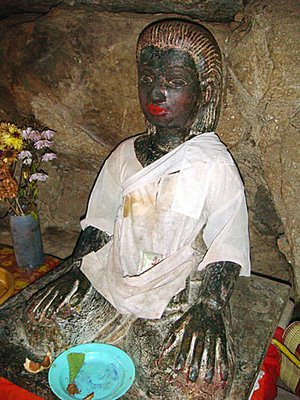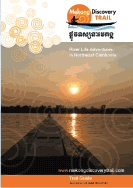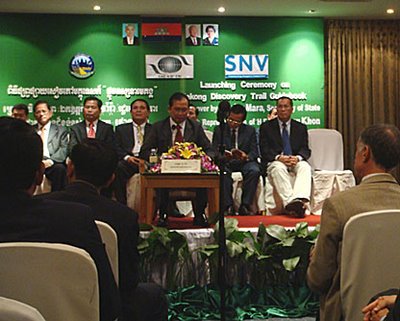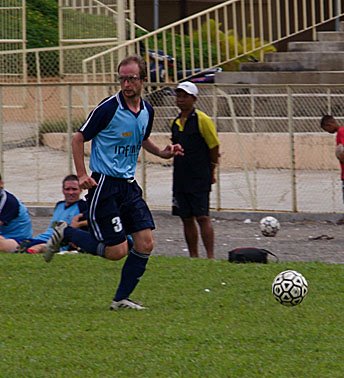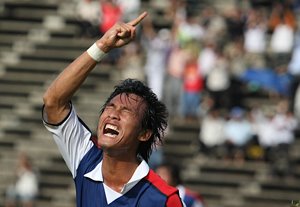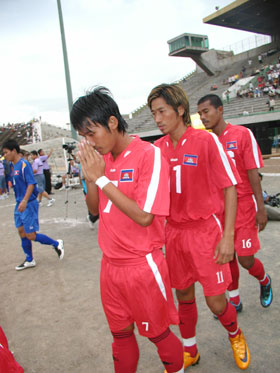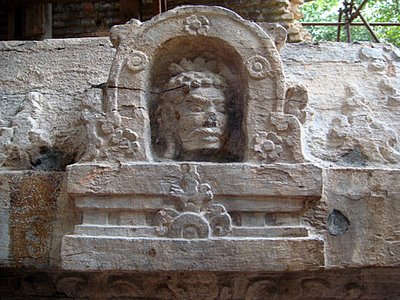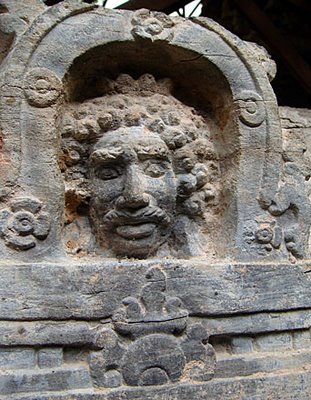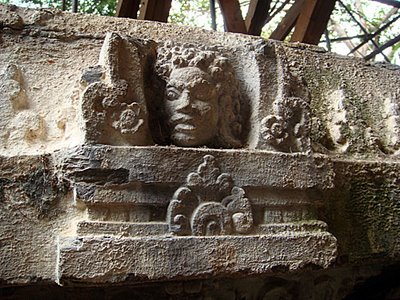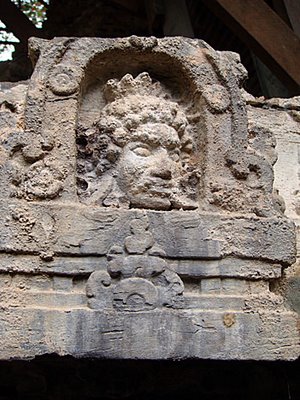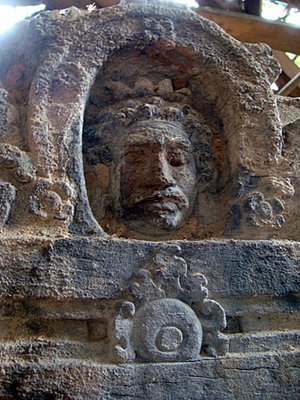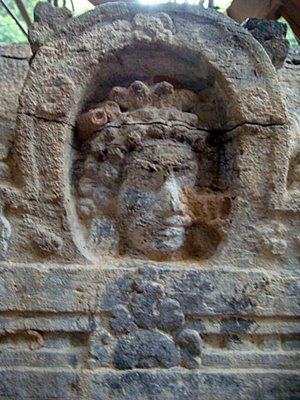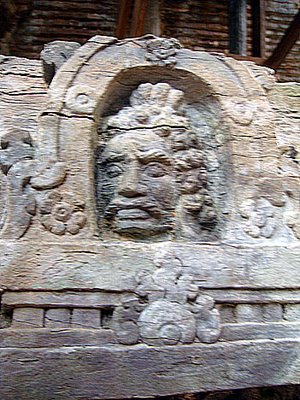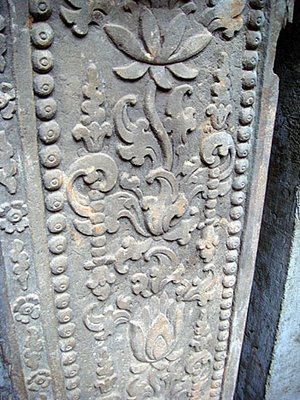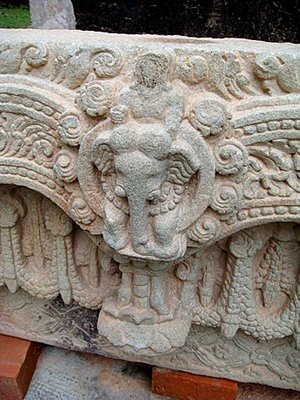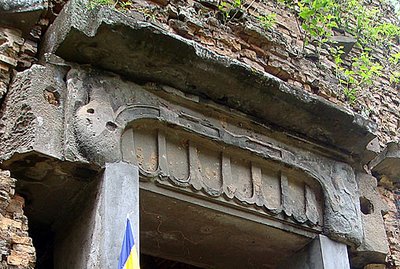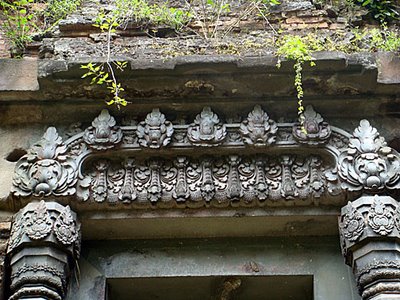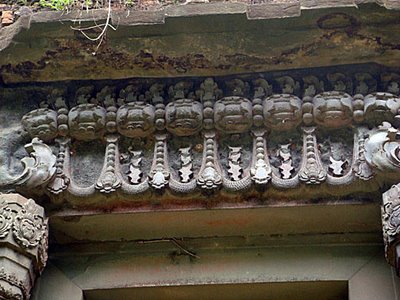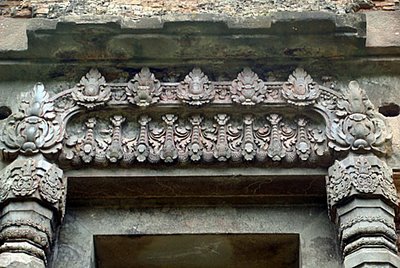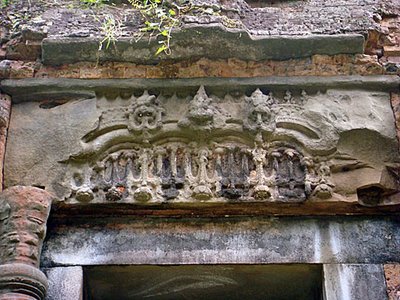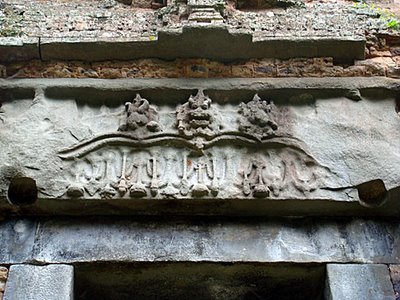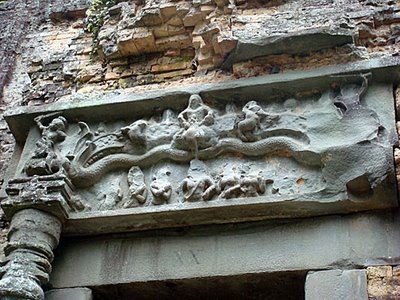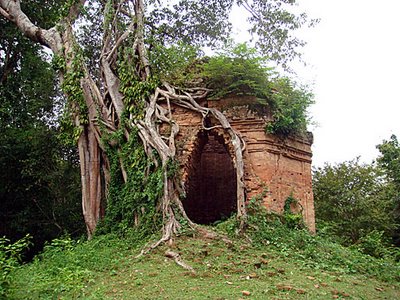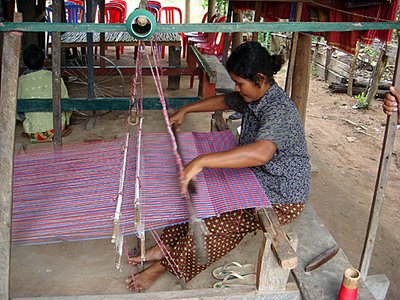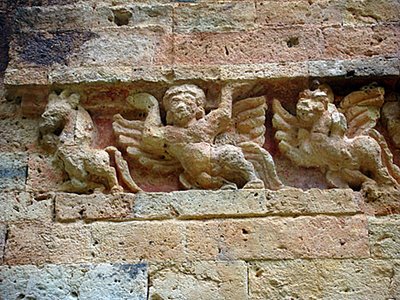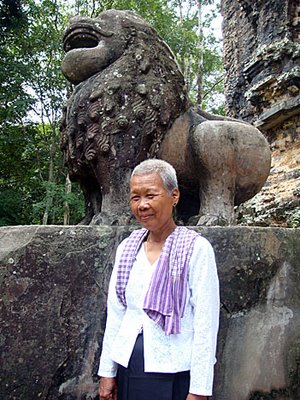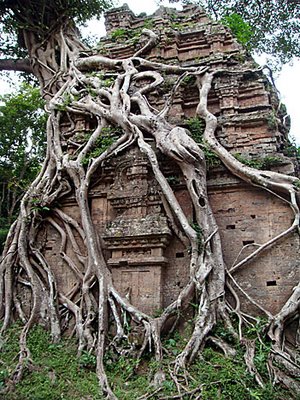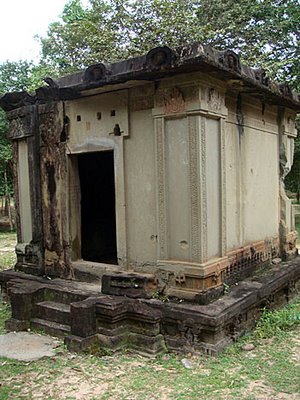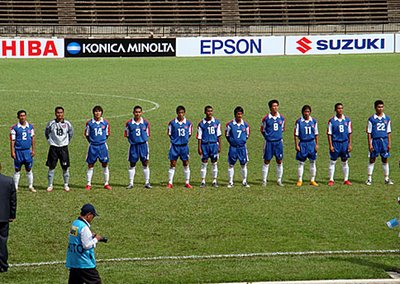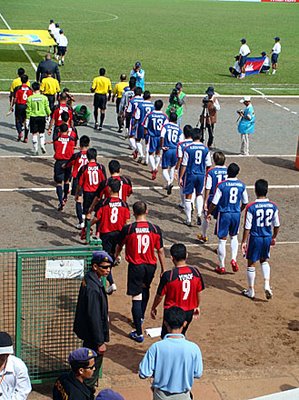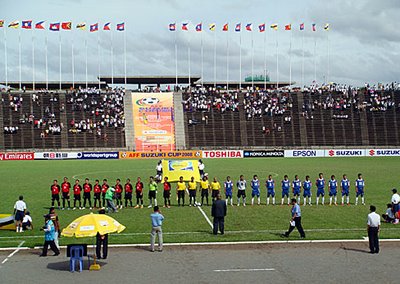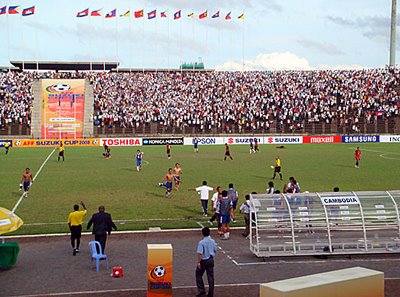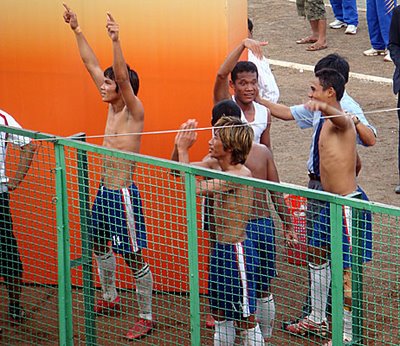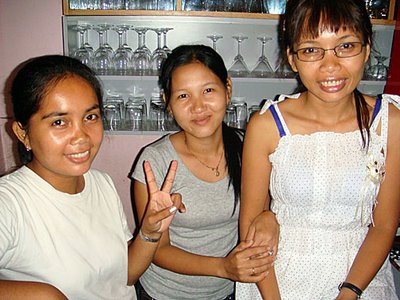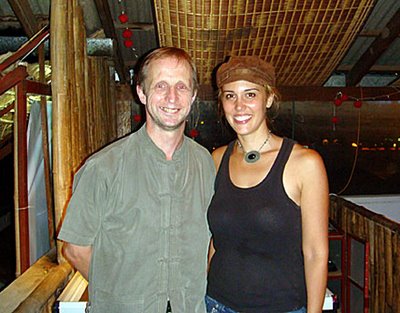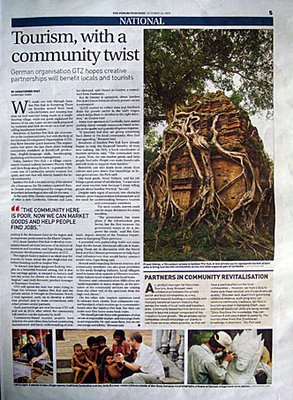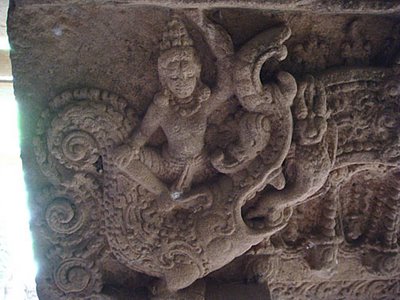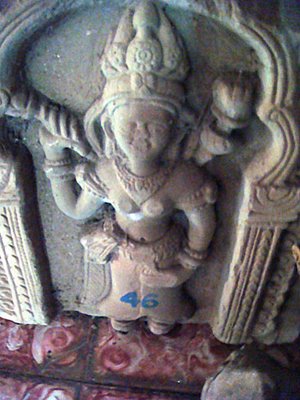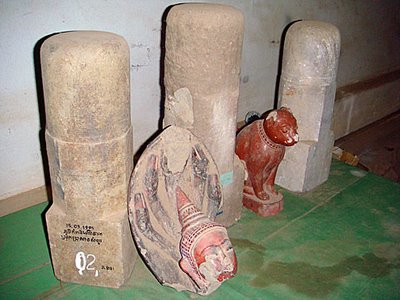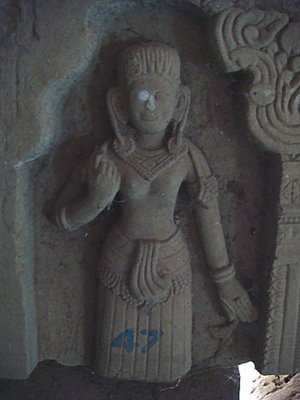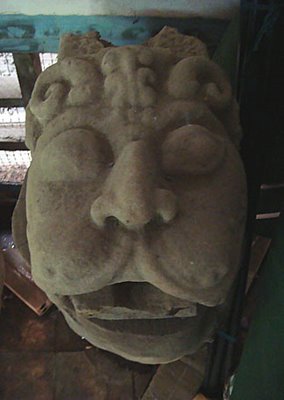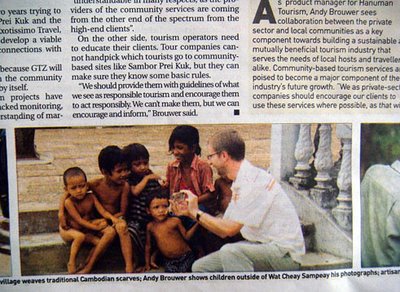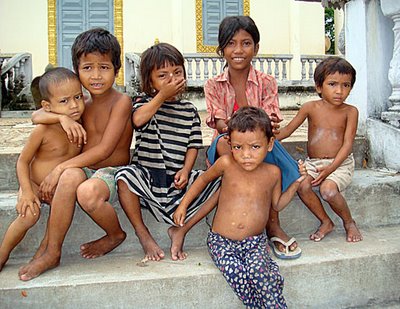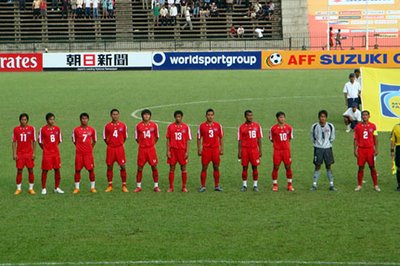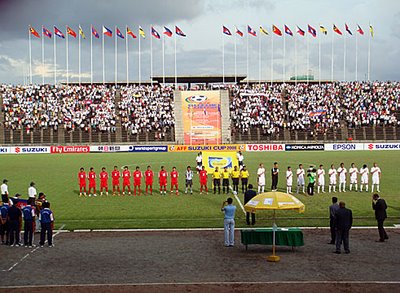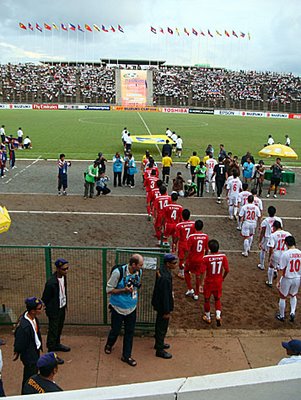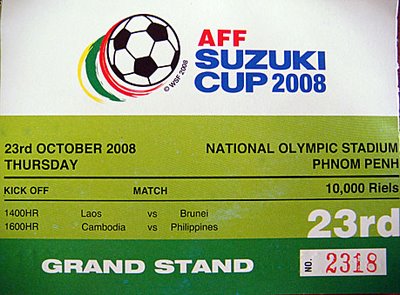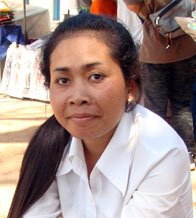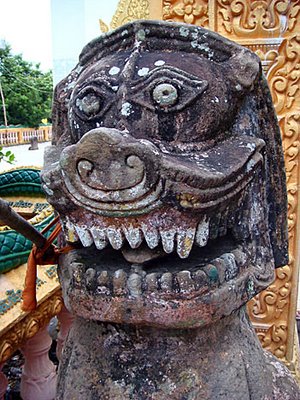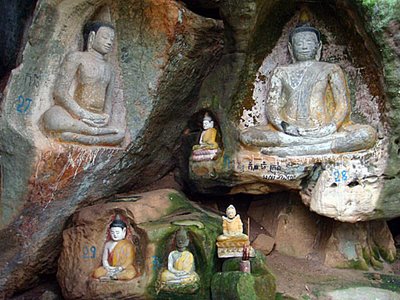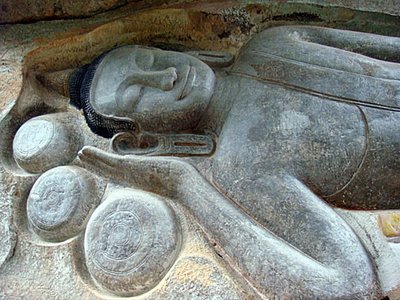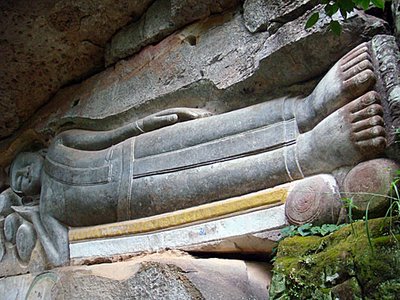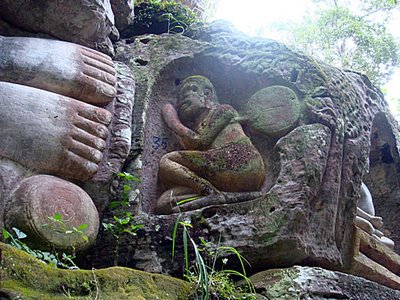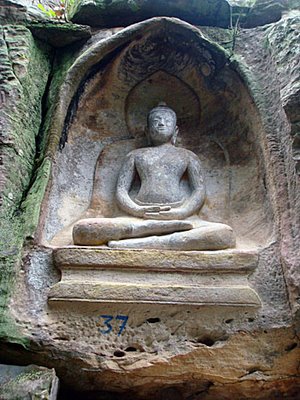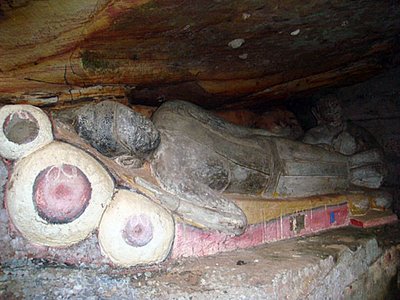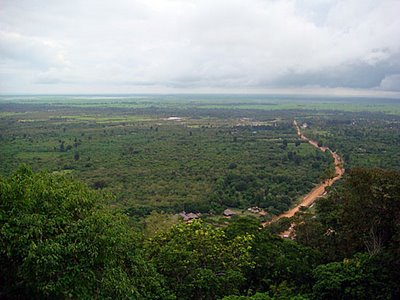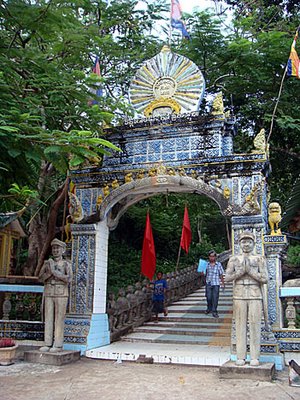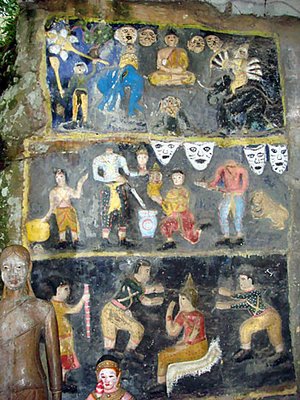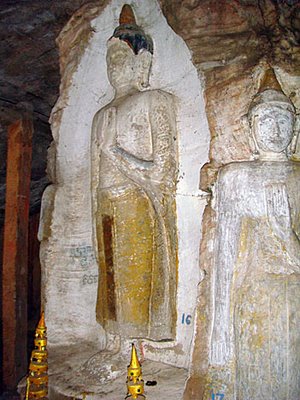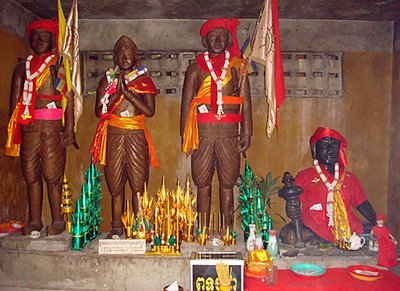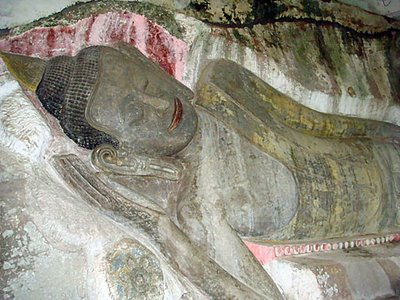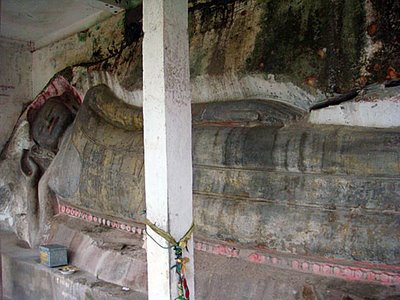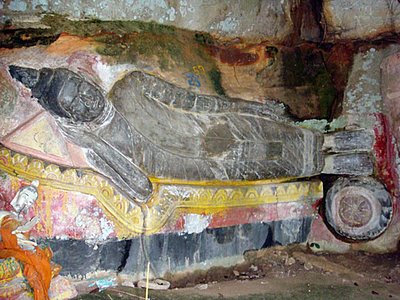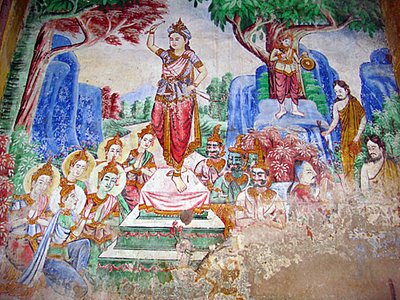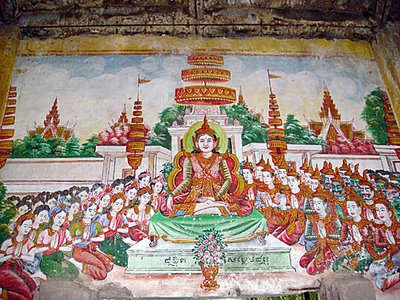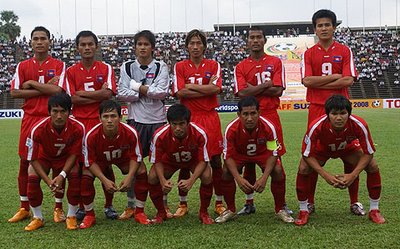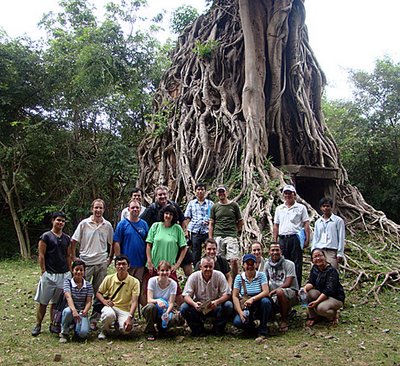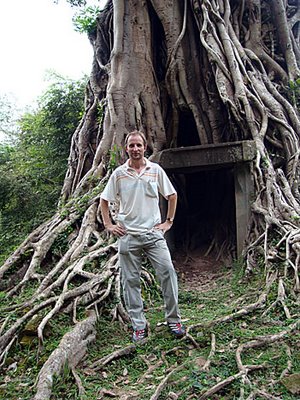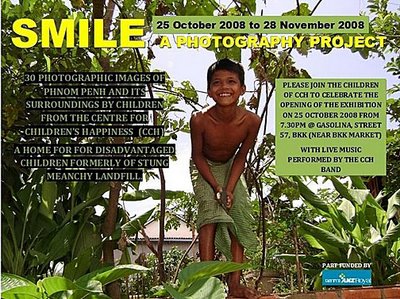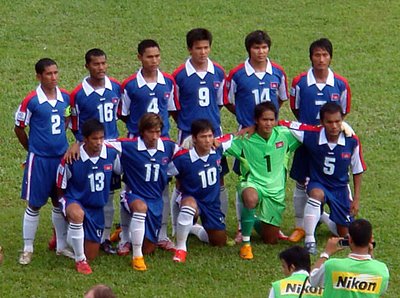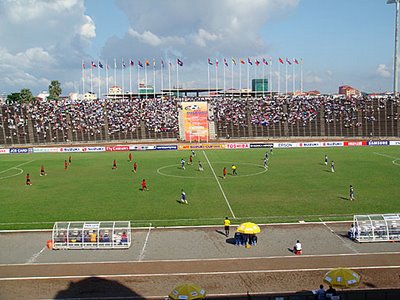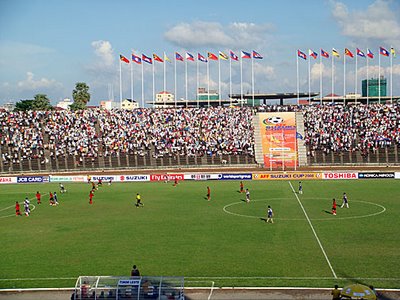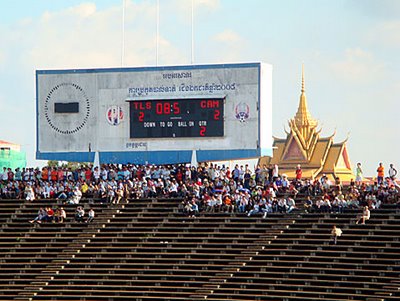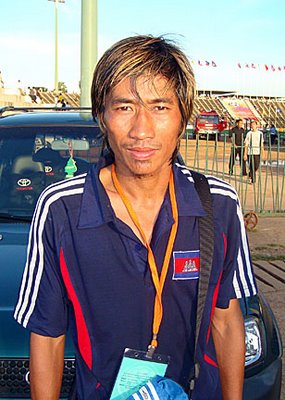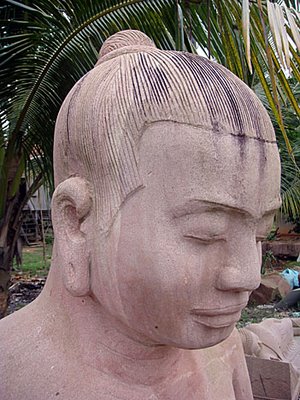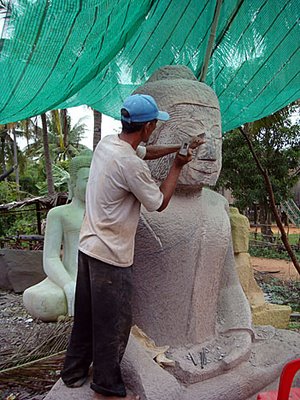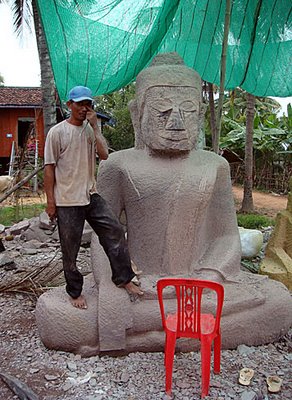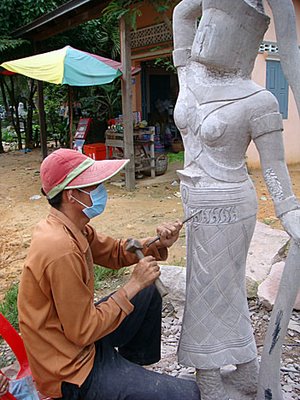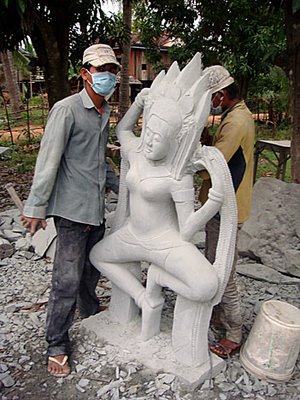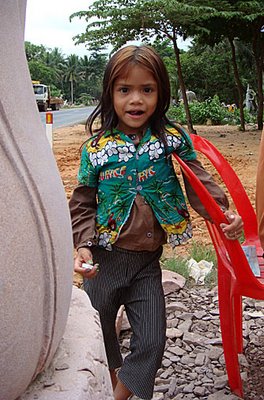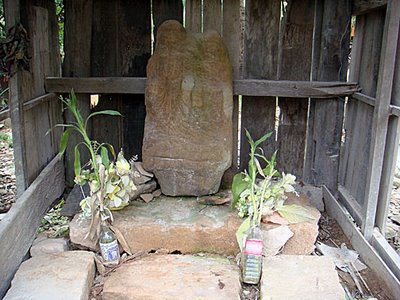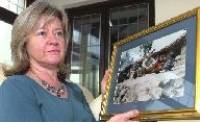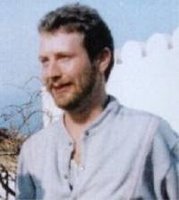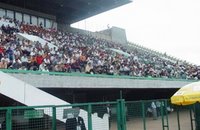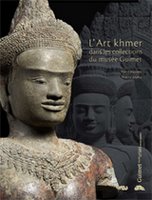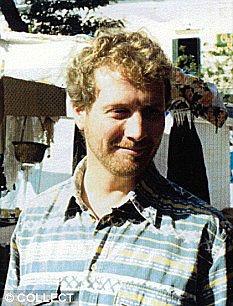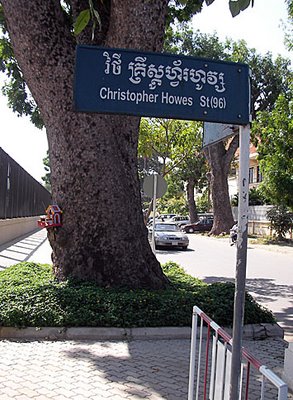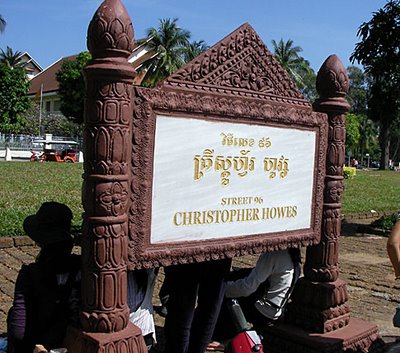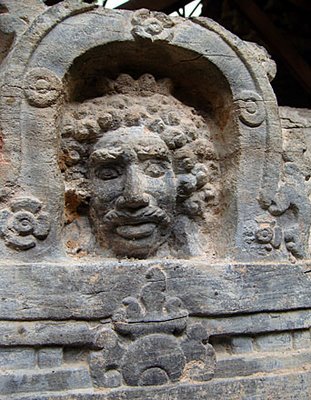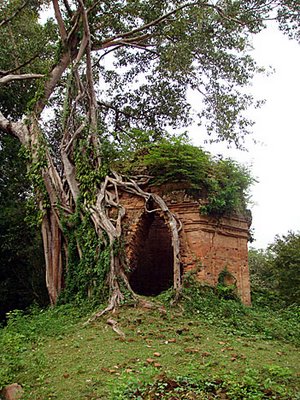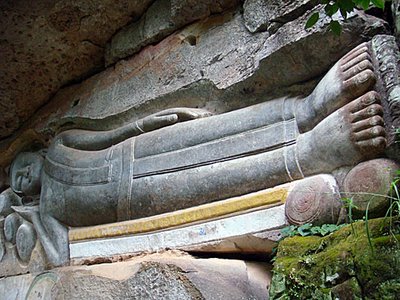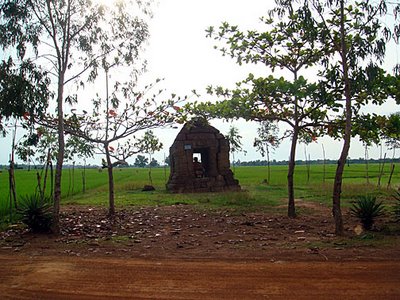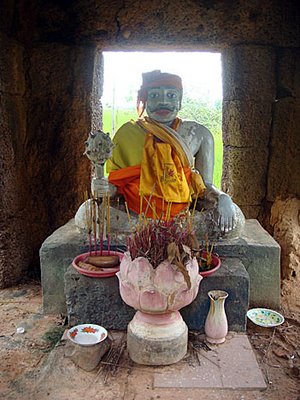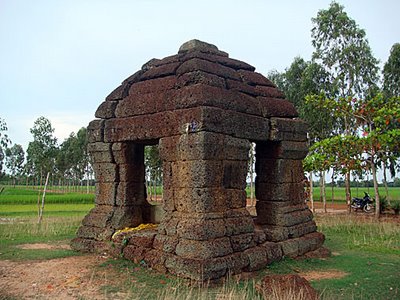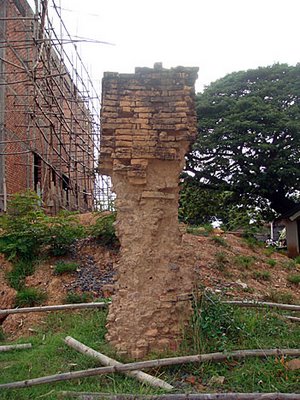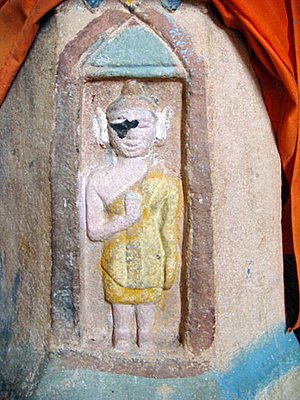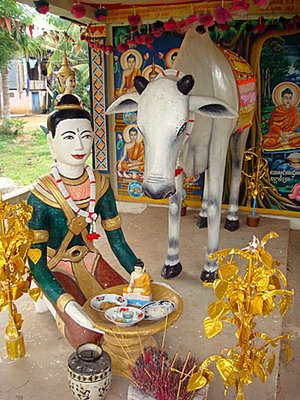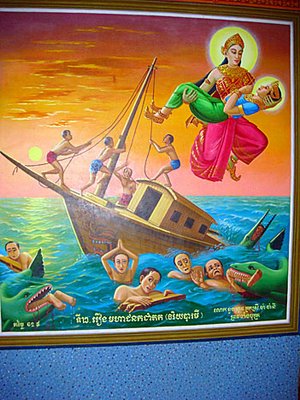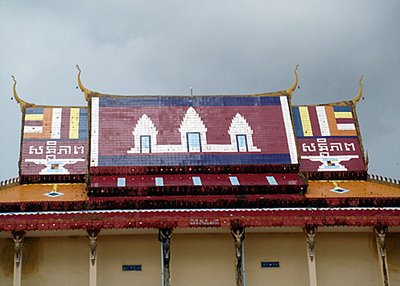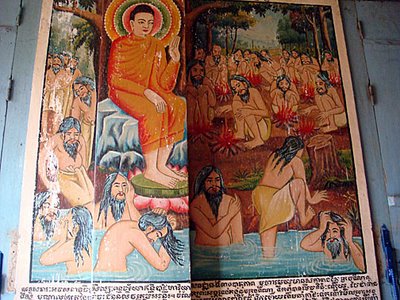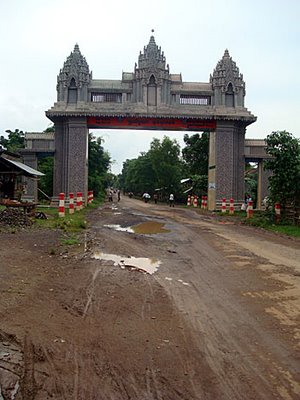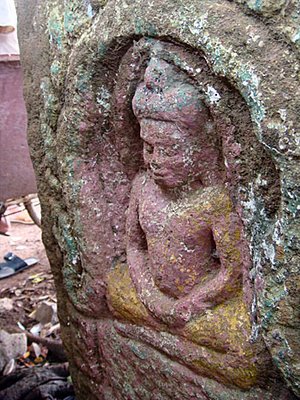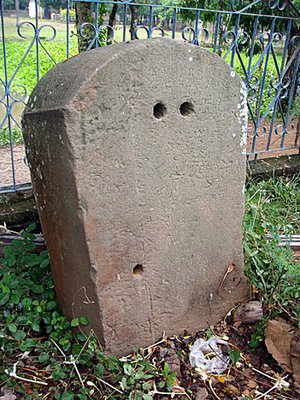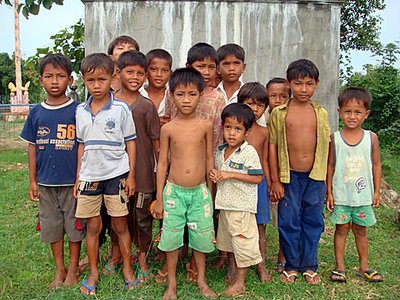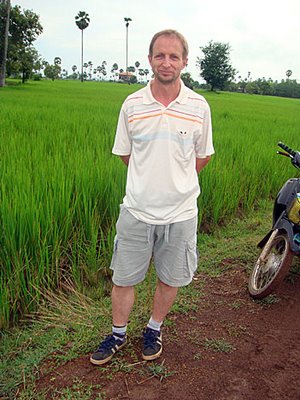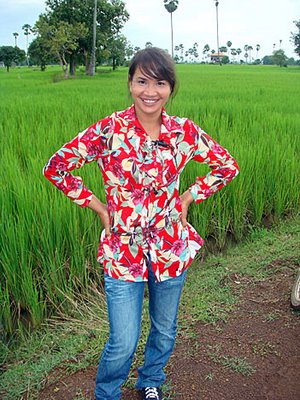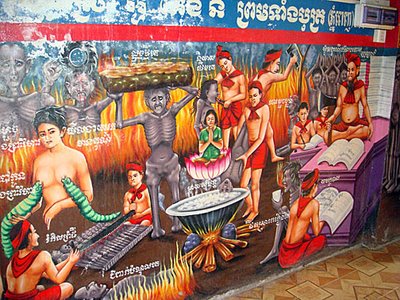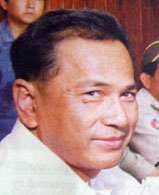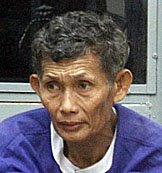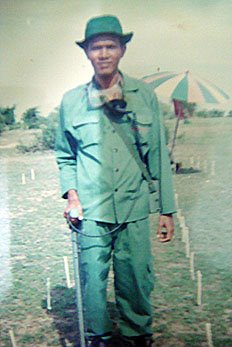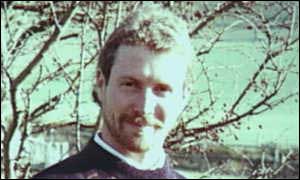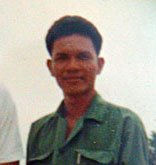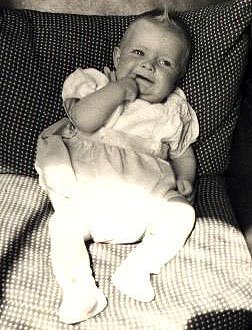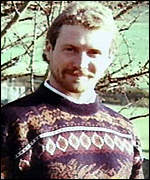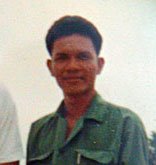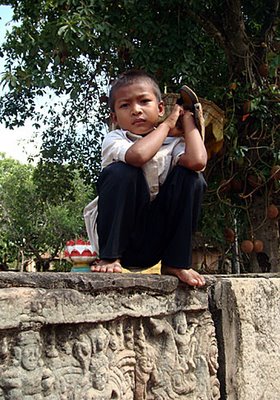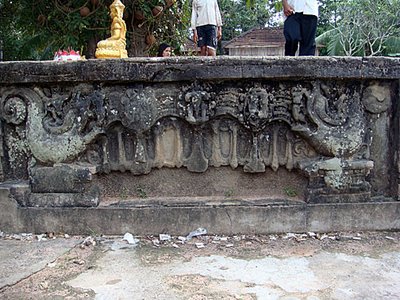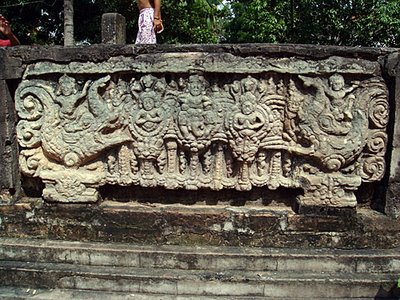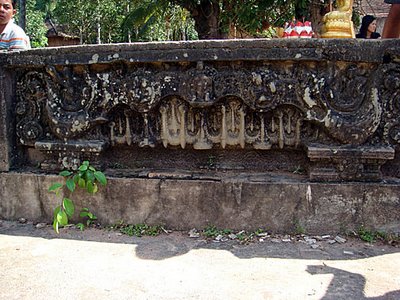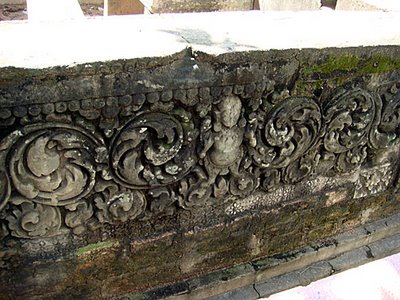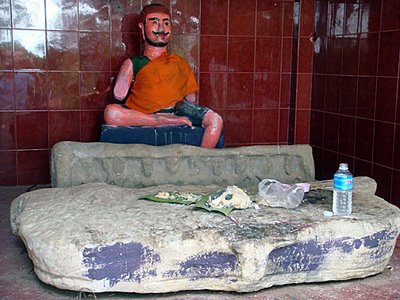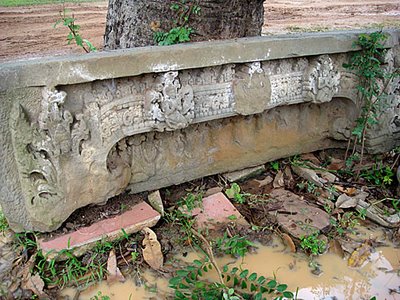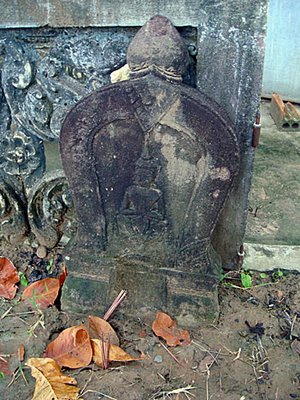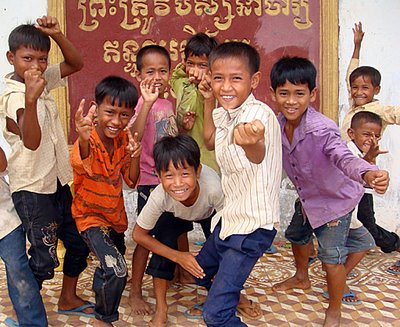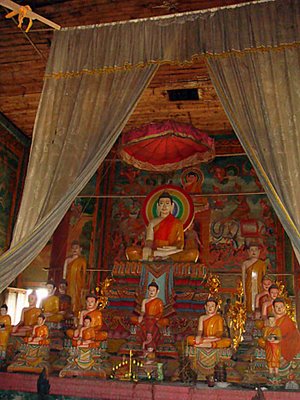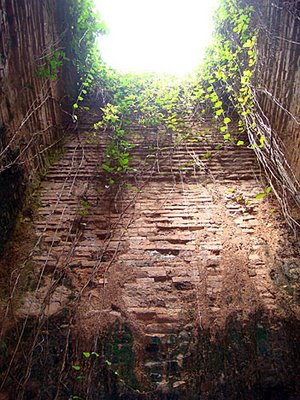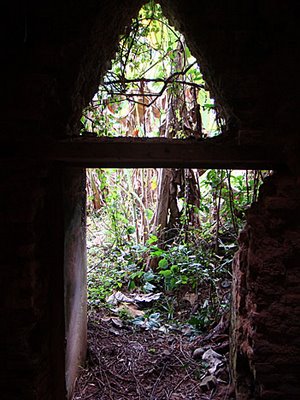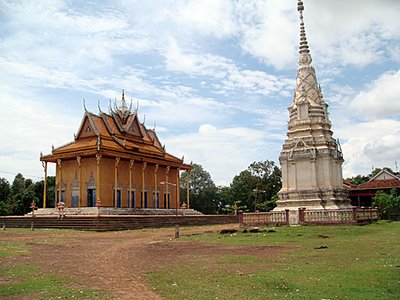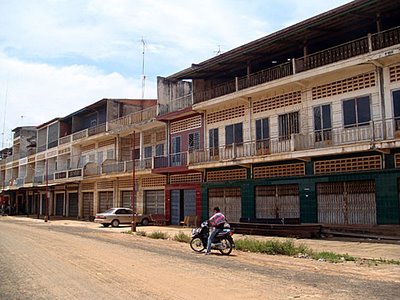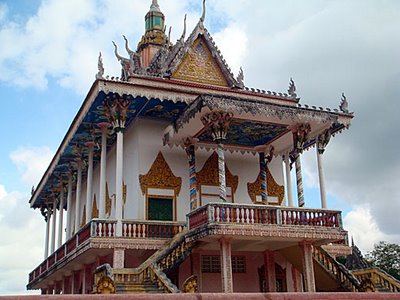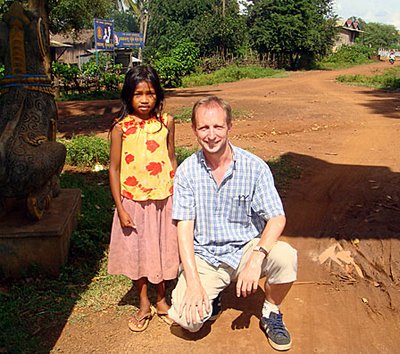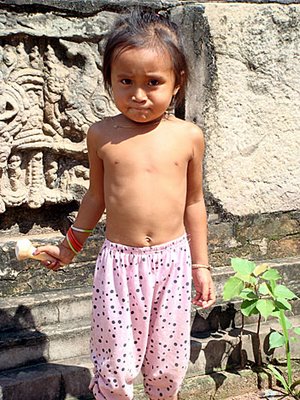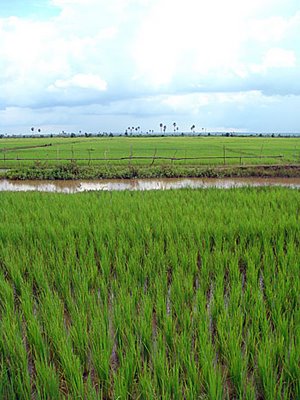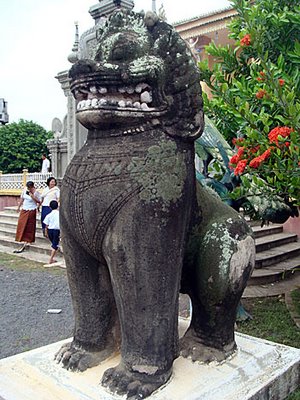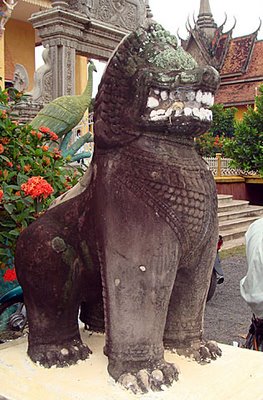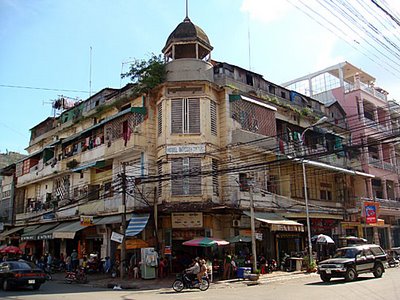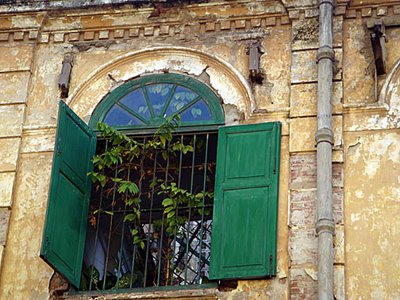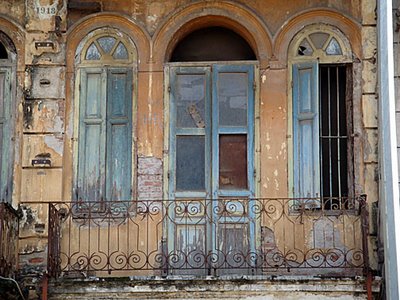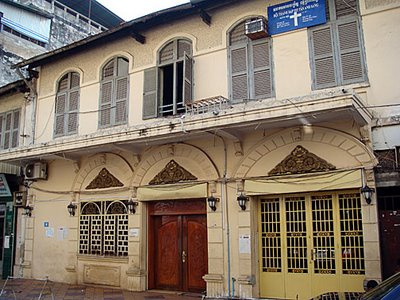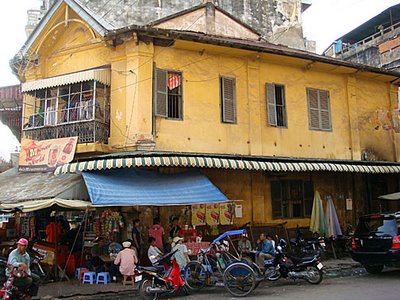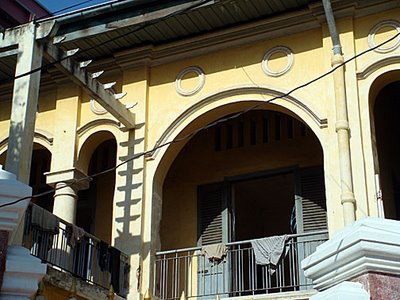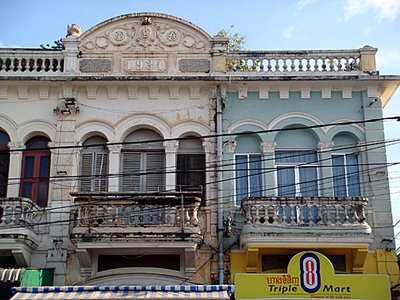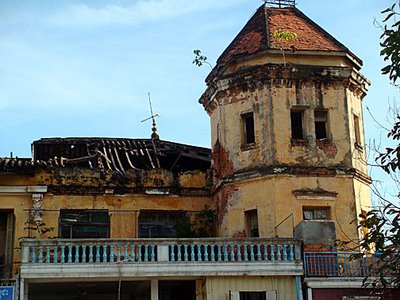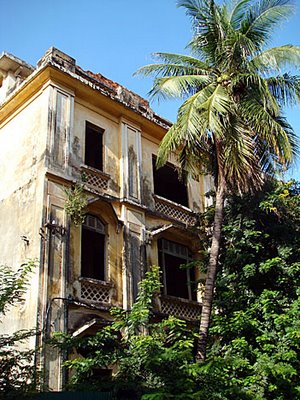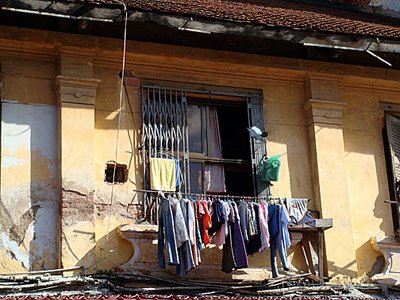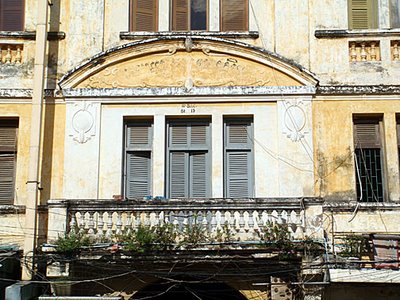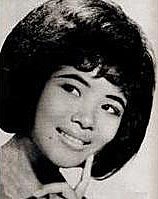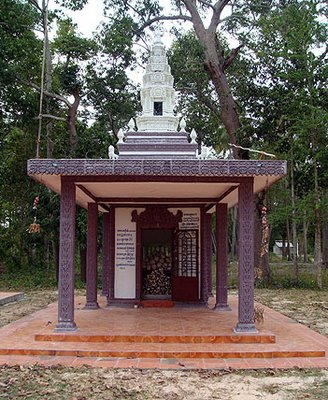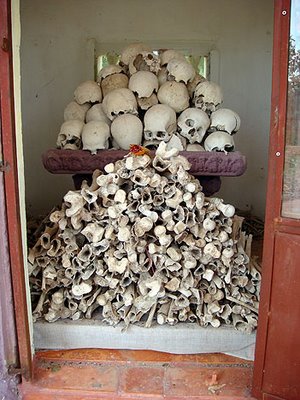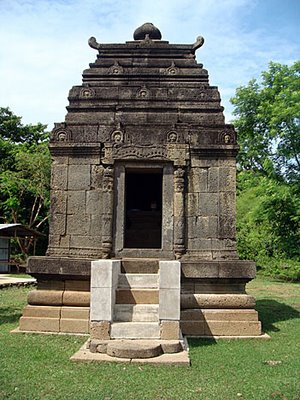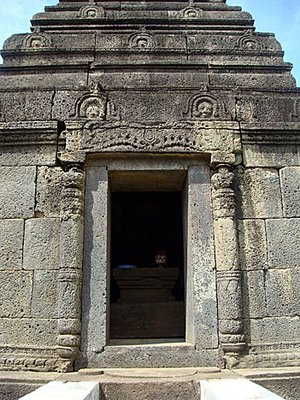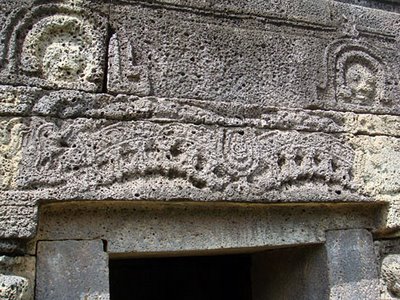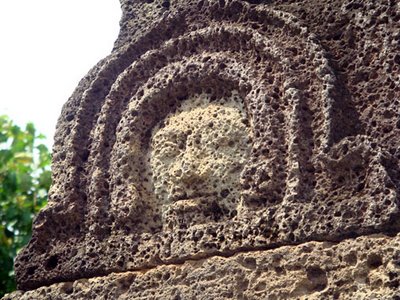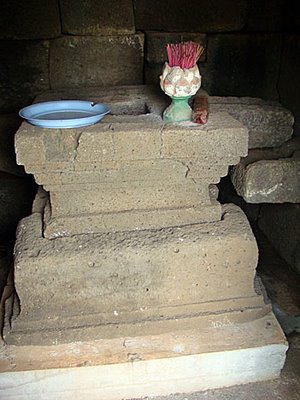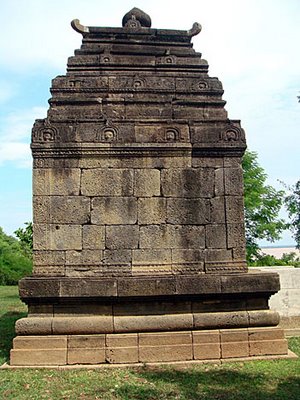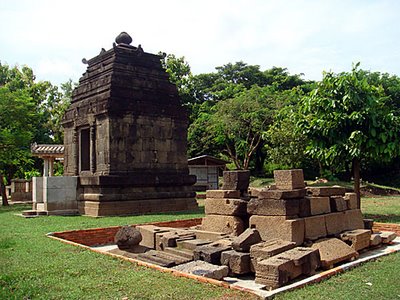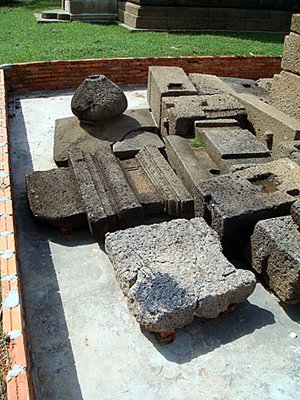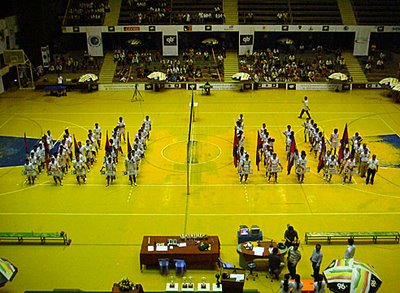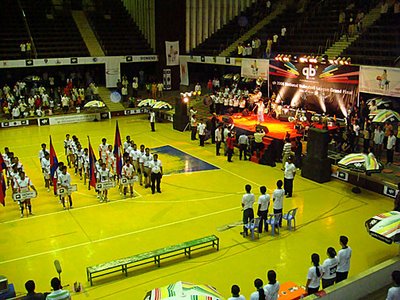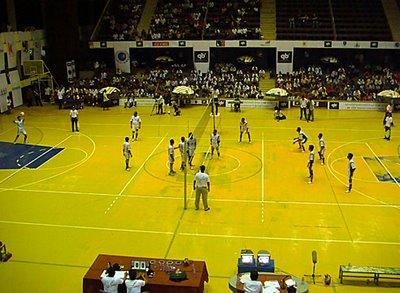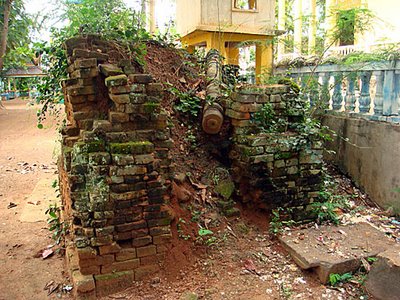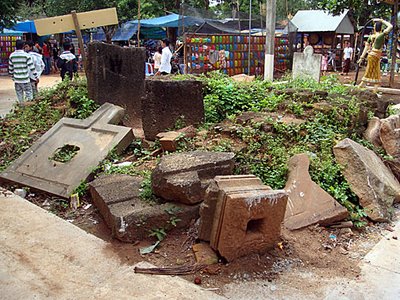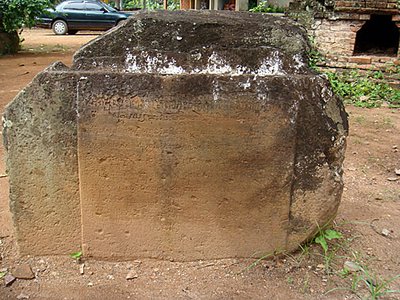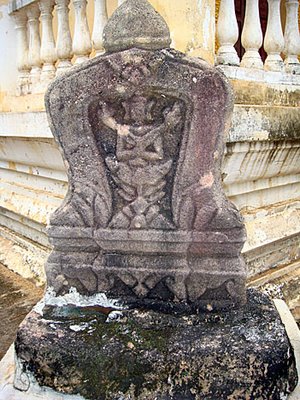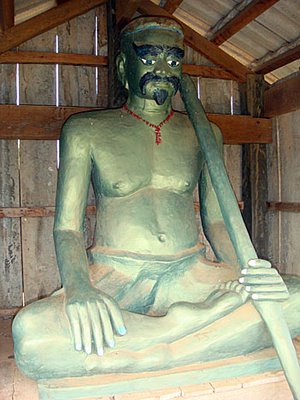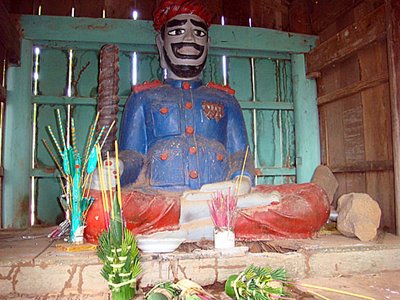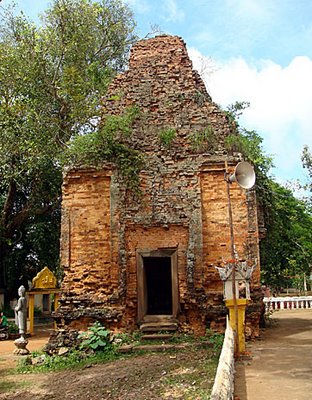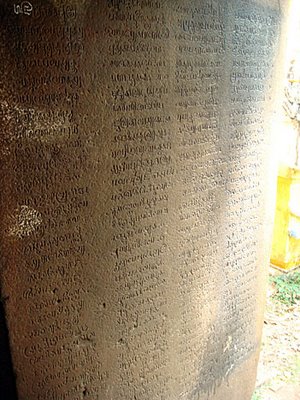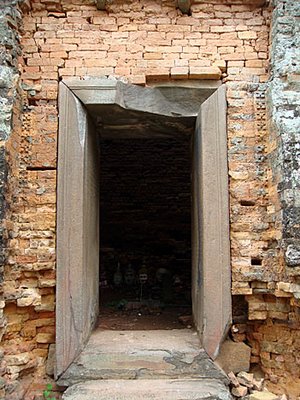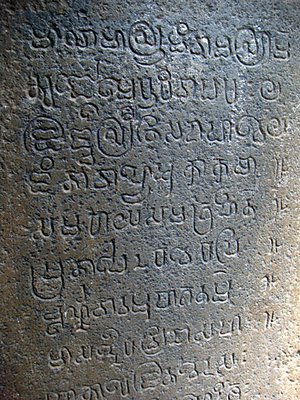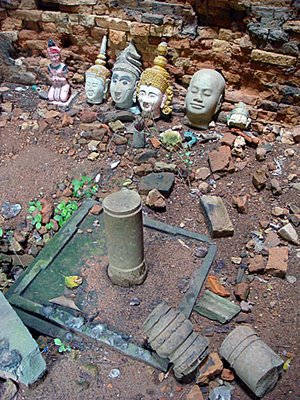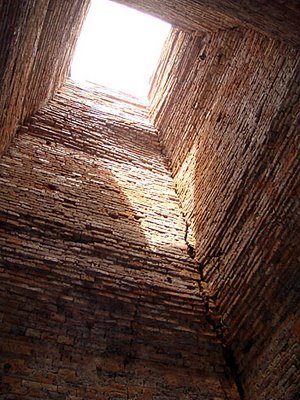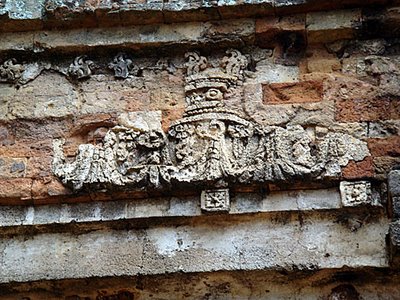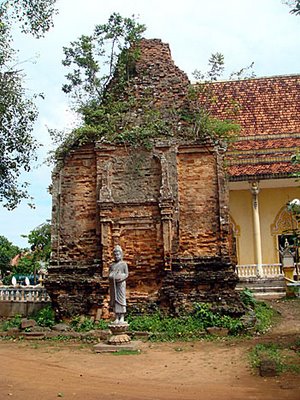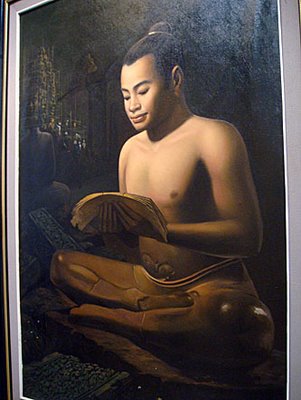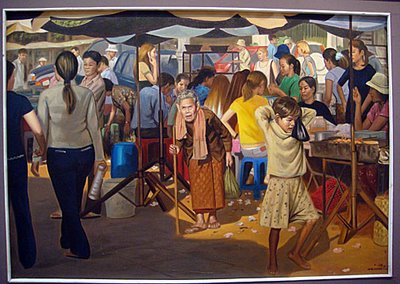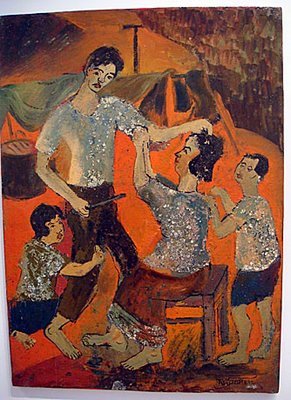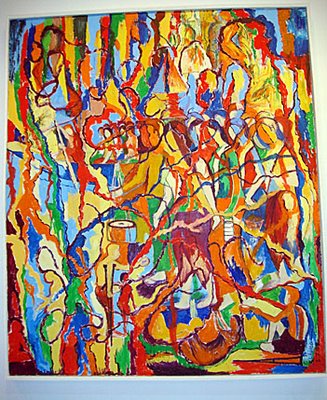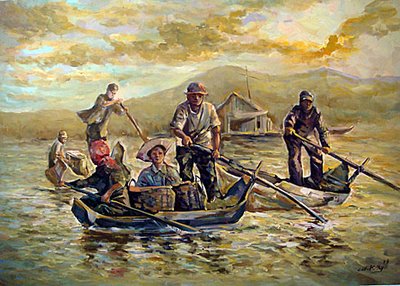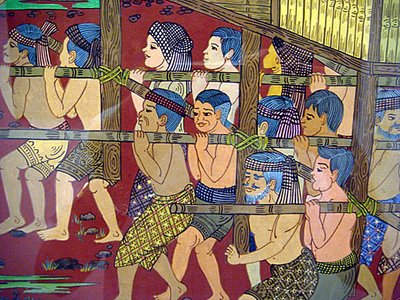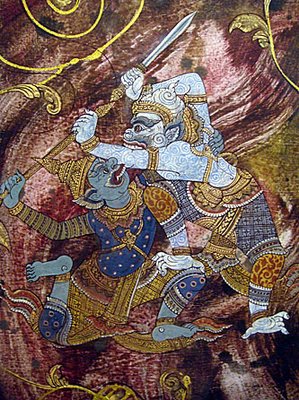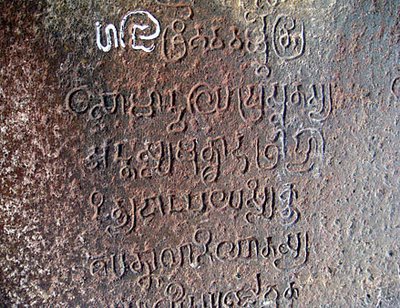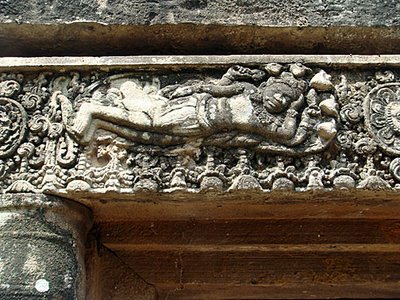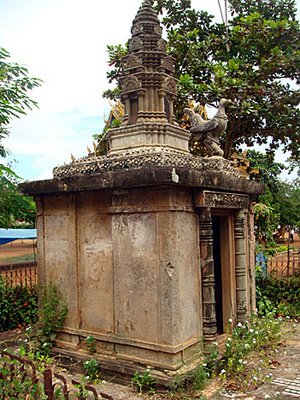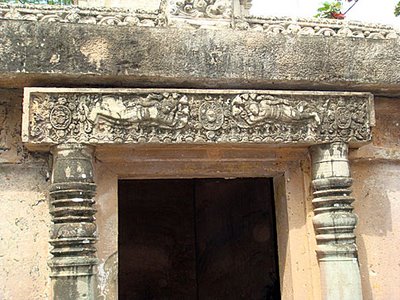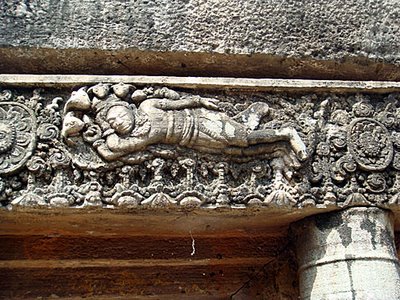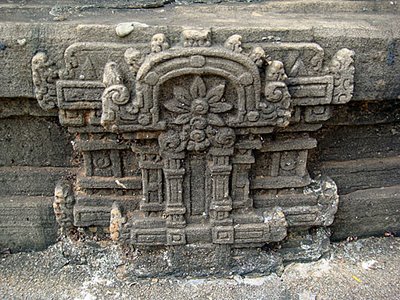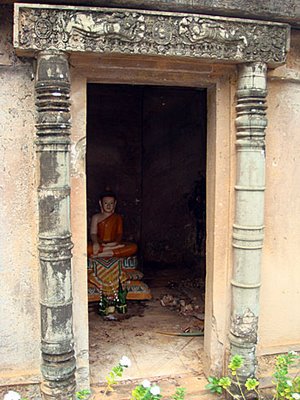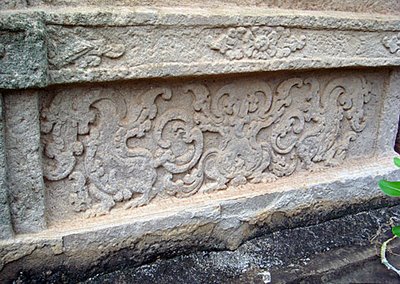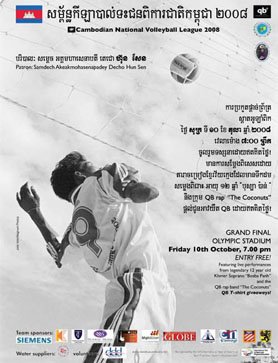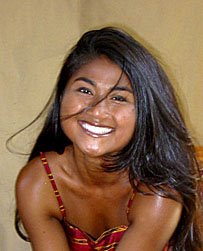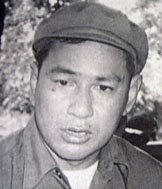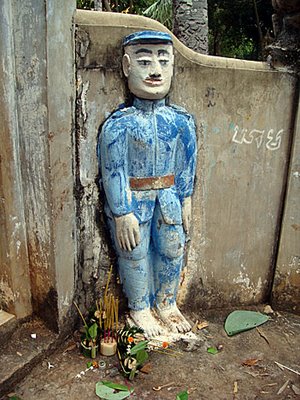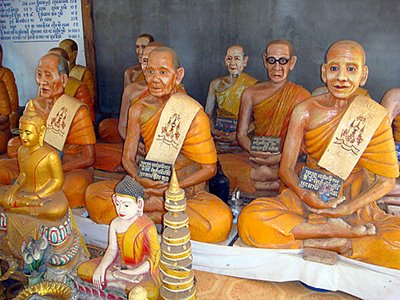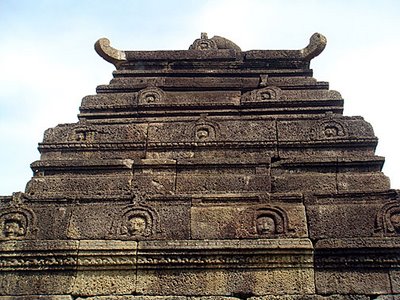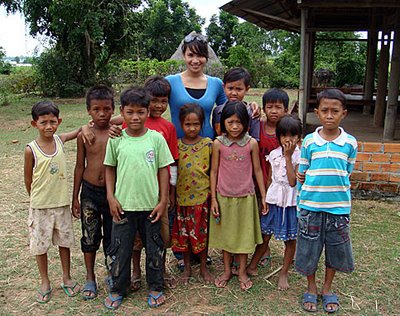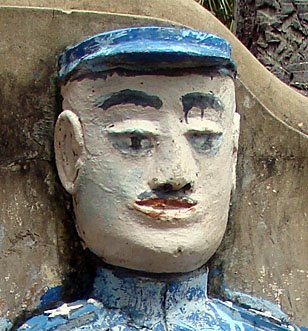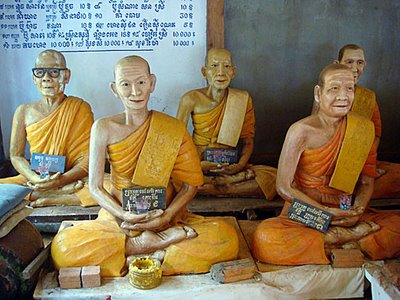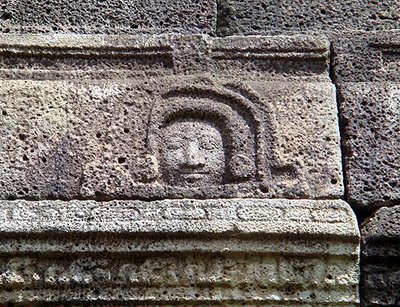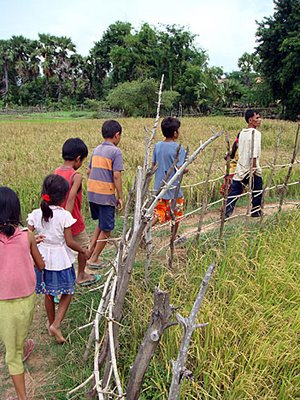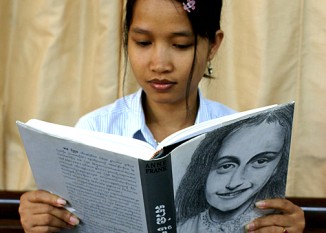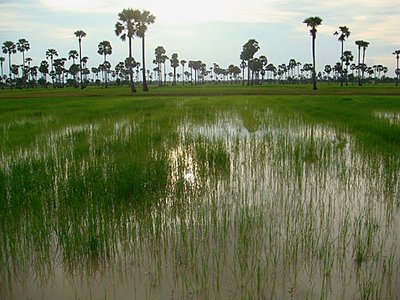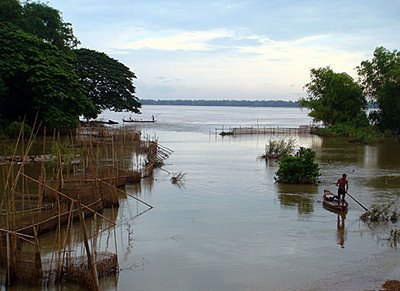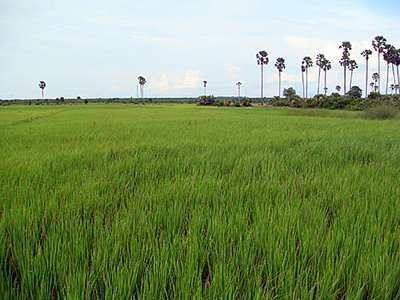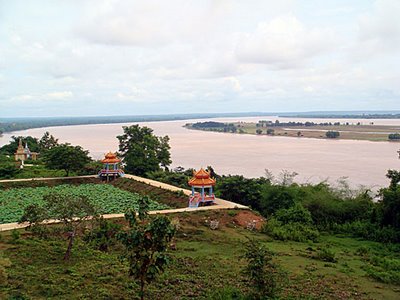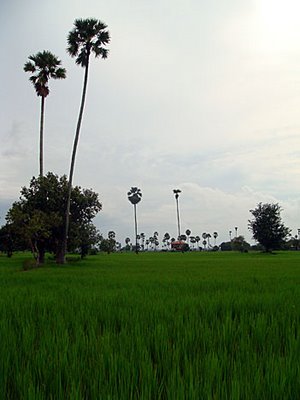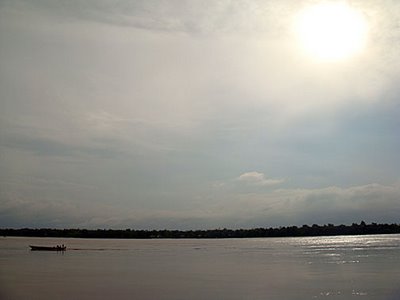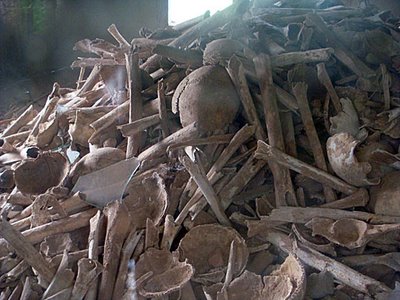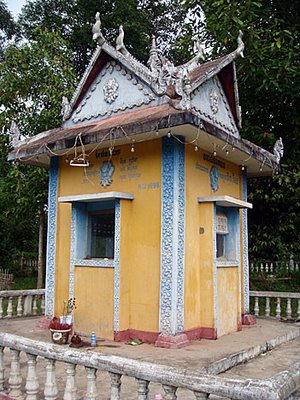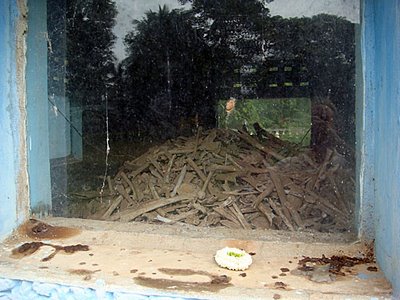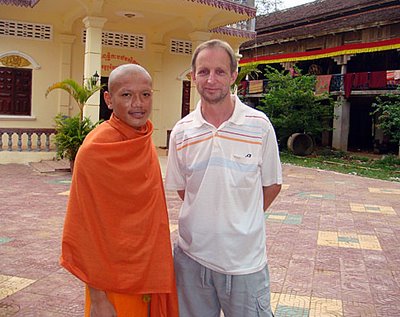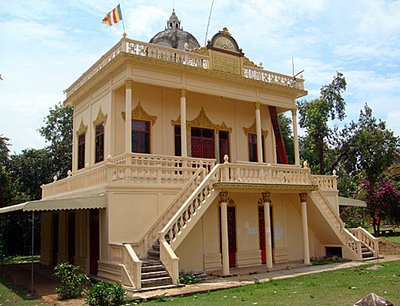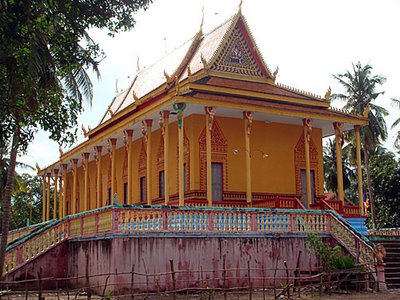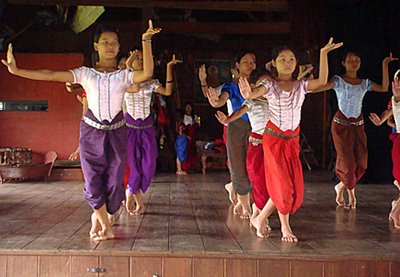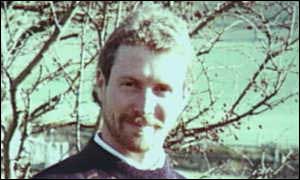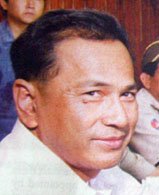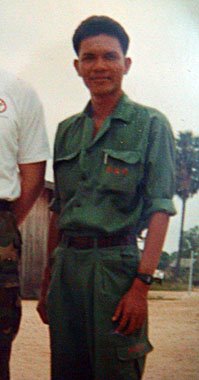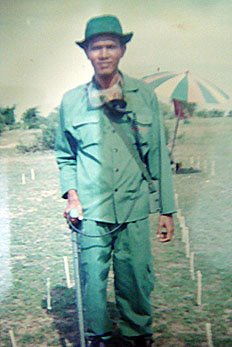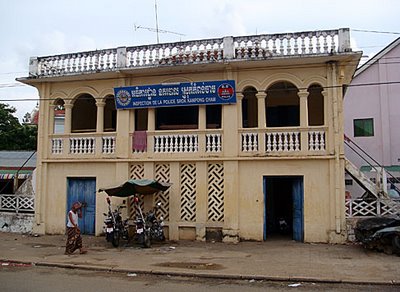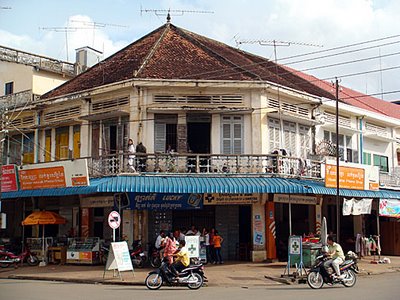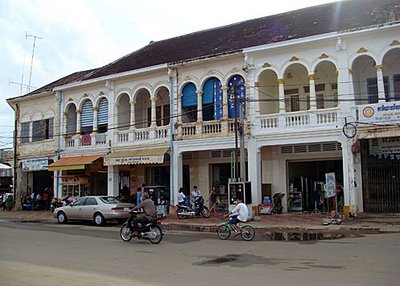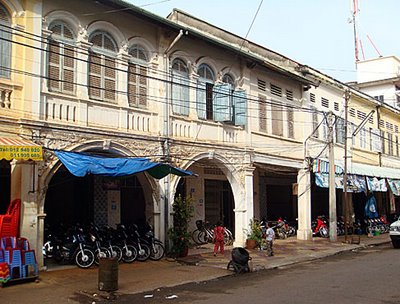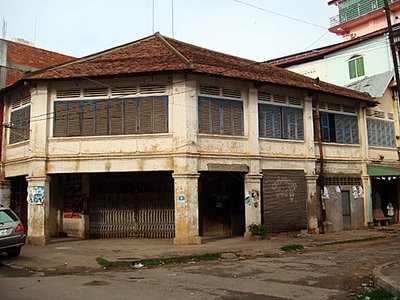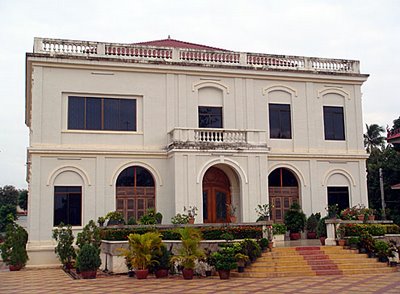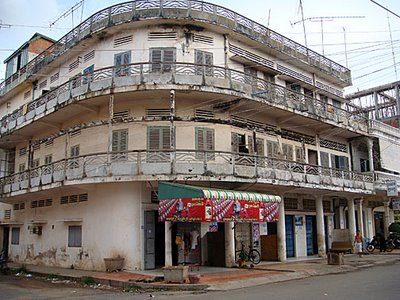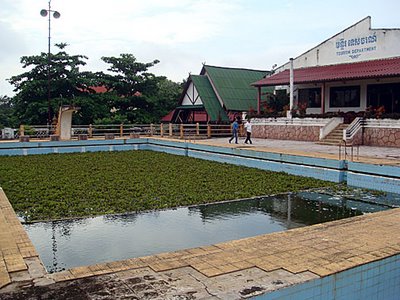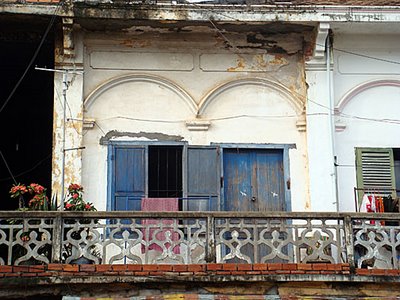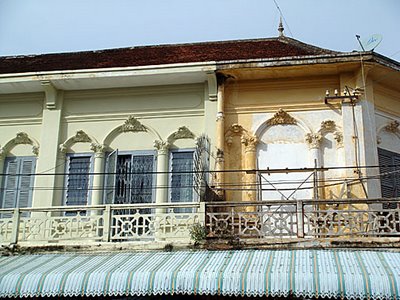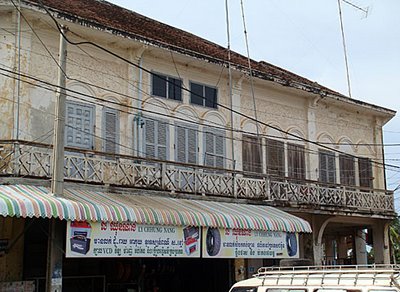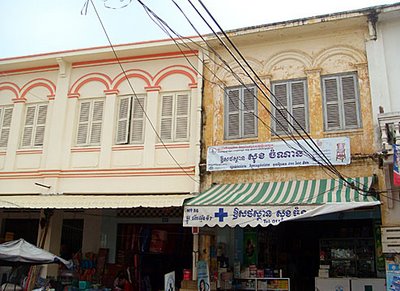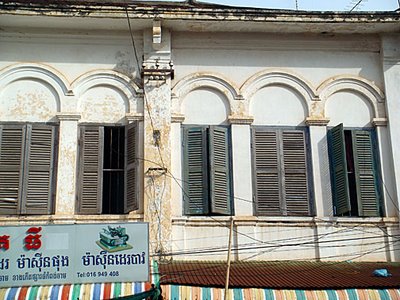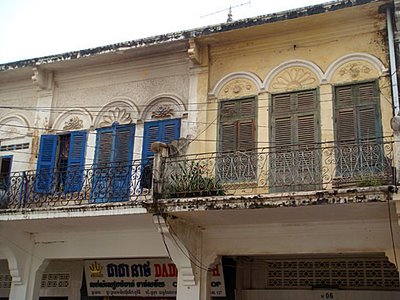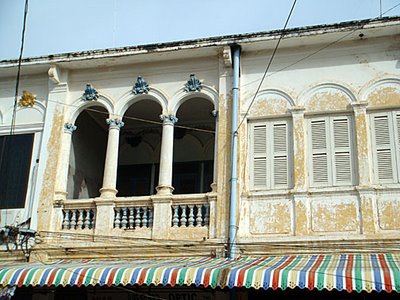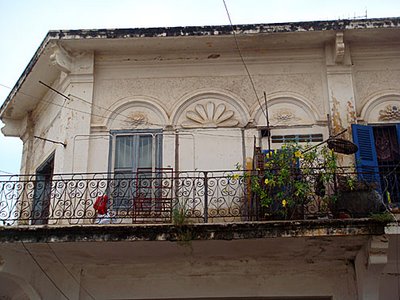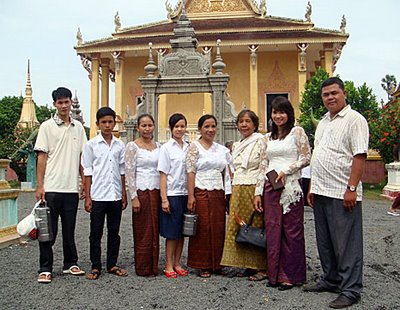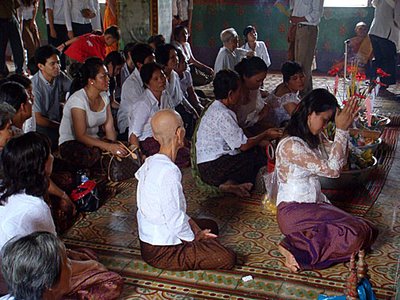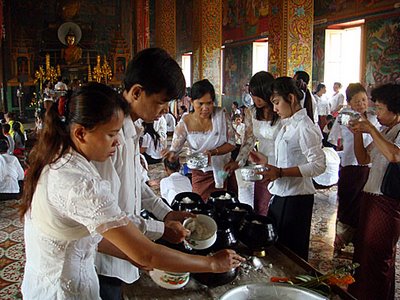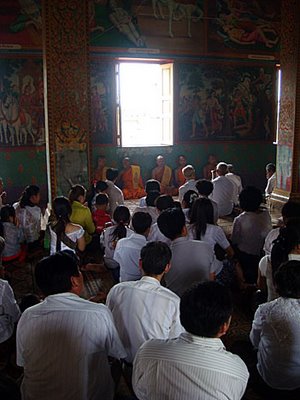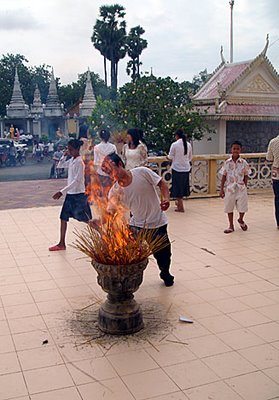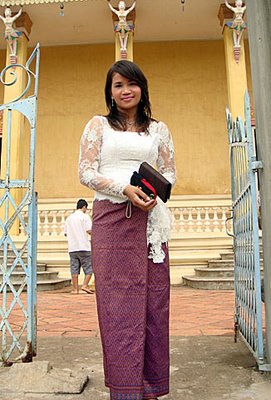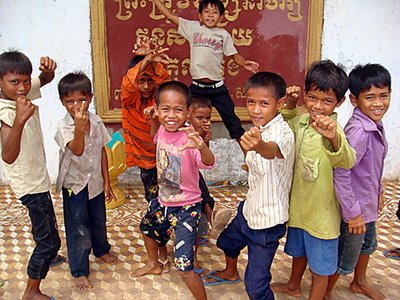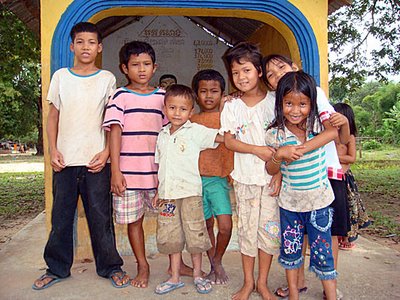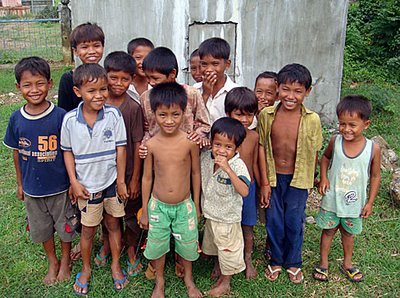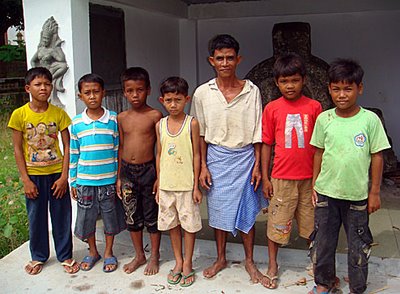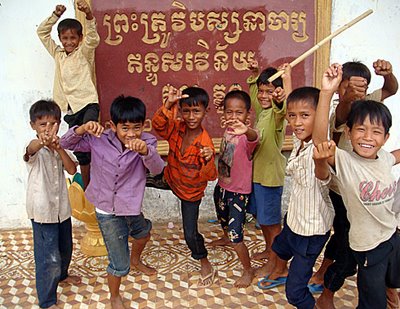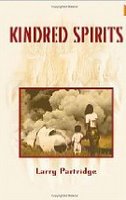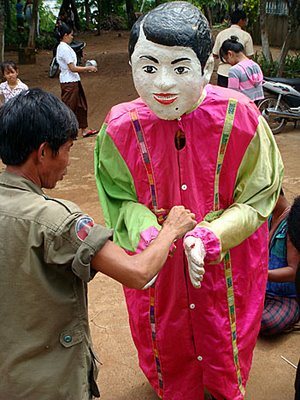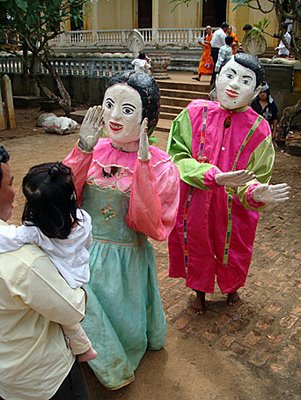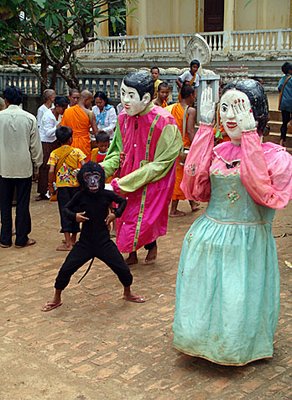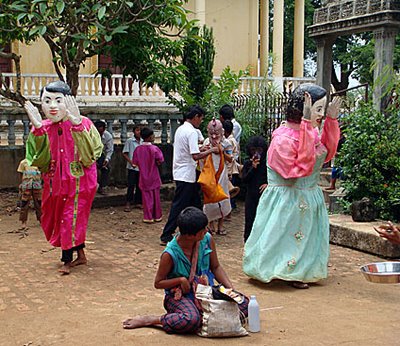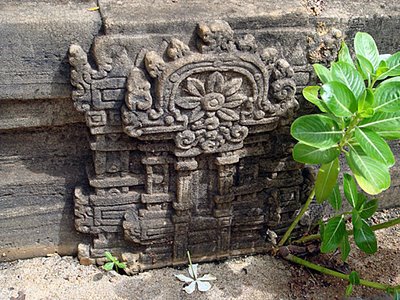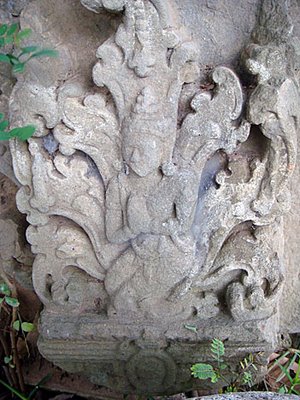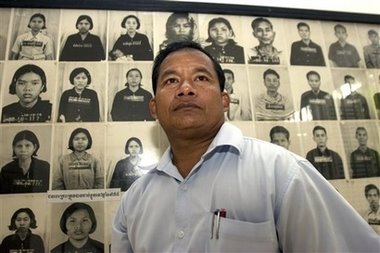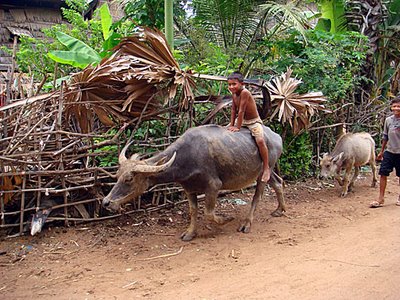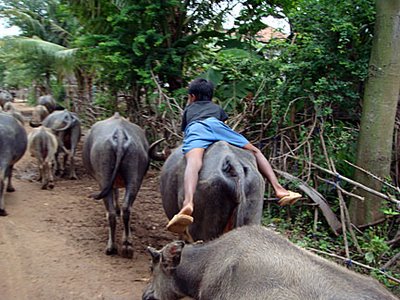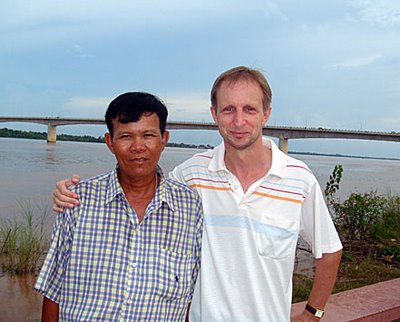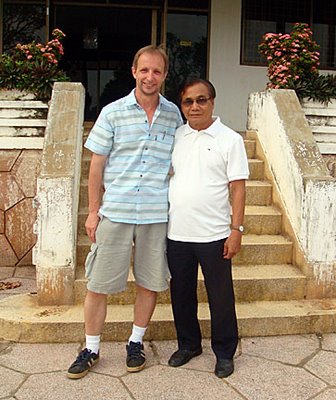Here's a few excerpts of what the United Kingdom press had to report on Friday's trial of the five former Khmer Rouge cadre accused of abduction and murder of Briton Christopher Howes and Cambodian translator Houn Hourth in March 1996. Christopher Howes: He stayed behind for his men - and ‘died from a single shot’ - by Richard Lloyd Parry, The Times, UK
The five former fighters, facing trial in the capital, Phnom Penh, all denied taking any personal part in the killings of Mr Howes and his translator, Houn Hourth, and blamed the crime on two other guerrillas who are believed to be dead…Twenty other members of Mr Howes’s team were held, but were released after he agreed to remain with their captors as surety for a future ransom. But he and Mr Houn were shot dead within a week after being given a last meal of apples and the tropical fruit durian, according to Cambodian prosecutors…A joint investigation by Cambodian and Scotland Yard detectives suggested ten years ago that Loch Mao was responsible for the killing. But yesterday the accused man insisted that his senior commander, Khem Tem, had ordered a soldier named Nget Rim to carry out the murder. “Howes fell backward. It was one single shot,” Mr Loch said. “Khem Tem then ordered me to fire more shots. I walked up with the intention of firing a shot into his chest, but Khem Ngun [another of the defendants] yelled, ‘That’s enough, he is already dead’.”…Mr Khem, who subsequently defected from the Khmer Rouge and was a major-general in the Cambodian Army at the time of his arrest last November, said: “Another Khmer Rouge soldier close to Ta Mok [a senior commander] ordered the shooting of Howes in the head, and then I turned my face away and felt shock.”…Another of the accused men, Put Lim, said that Mr Howes was killed at night and his body was cremated on a wood fire.
Khmer Rouge soldier tells of Briton's murder - by Andrew Buncombe, The Independent, UK More than a decade after a British charity worker was seized and murdered in Cambodia, a former Khmer Rouge soldier has told how he was shot dead at night, before his body was doused with diesel and burnt. In a court in Phnom Penh, Put Lim, one of five former soldiers on trial for murder, said Christopher Howes and his Cambodian translator were killed after being seized close to the Angkor Wat temple in 1996.
Pol Pot ordered murder of British mine-clearer, court told: Trial hears Khmer Rouge leader had blanket policy to murder foreigners on grounds they supported the government – by Ian MacKinnon, The Guardian, UK
A British mine-clearing expert who was murdered in Cambodia and his remains burned to hide the evidence was killed on the orders of the Khmer Rouge leader, Pol Pot, a court heard today…Howes was shot within days of his capture while leading a mine-clearance team north of Siem Reap - home to the Angkor Wat temple complex - after his abductors lulled him into a false sense of security by laying out a sleeping mattress for the night and giving him fruit…His interpreter, Huon Houth, who was among the 30-strong team from British-based Mines Advisory Group (MAG), was murdered a day earlier when his captors deemed him "no longer necessary" because one of the alleged killers spoke English…Investigations by a Scotland Yard team working with the Cambodian police eventually unravelled Howes' fate, declaring he was murdered after forensic tests on bone fragments found in a fire. The evidence collected from witness statements in the two years after Howes' disappearance was presented at the Phnom Penh court today by former Metropolitan police anti-terrorism officer, Mike Dickson, now an advisor to the UN-backed Khmer Rouge genocide tribunal…One of the accused, Khem Ngoun, 59, the former chief-of-staff of the one-legged Khmer Rouge army commander, Ta Mok, was a brigadier-general in the Cambodian army until his arrest. Along with the others, Loch Mao, 54, a Khmer Rouge officer who became a civil servant, Cheath Chet, 34, Puth Lim, 58, and Sin Dorn, 52, the frail Ngoun faces life imprisonment for murder and illegal detention when the investigating judge, Iv Kimsry, delivers his verdict in 10 days' time…In a marathon session the court heard today of the chilling last days of Howes and Hourth after their abduction on March 26 1996. Some of the de-mining team escaped almost immediately while all the others were released after Howes declined to abandon his staff to fetch ransom money. Howes and Hourth were taken towards Anlong Veng. But in an interview with the British detectives, Khieu Sampan, the Khmer Rouge's nominal head of state, said that Hourth was killed in Kul village after Ngoun said the interpreter was unnecessary. Howes was held in a school where Ngoun interrogated him, before he was taken out into the countryside to a road near the house of Mok, who passed the order to "solve the problem" and kill him. Howes was taken in a white Toyota pickup truck driven by Lim, accompanied by four guards including Ngoun, Mao, and two others, Khem Tem and Soeun Rim, who subsequently died. In a statement to police before his death, Rim said Mao killed Howes with two bullets from an AK-59 rifle provided by Ngoun. Both Ngoun and Mao changed earlier statements they made and maintained only Rim, who died in 2004, fired the fatal shots. Mao is adamant his weapon jammed and he could not fire. All the accused argued they acted on orders of the Khmer Rouge's brutal "brother number one" and that failure to do so would have meant certain death.
Court hears chilling details of how British landmine expert was taken into the Cambodian jungle and executed by Khmer Rouge - by Richard Shears, The Mail, UK
A British mine clearance expert was offered a final meal of forest fruits before being shot in the head on the orders of the Khmer Rouge, a court has heard…The 37-year-old Bristol man was captured by troops serving Cambodian despot Pol Pot in 1996 while leading a Mines Advisory Group operation at the temples at Angkor Wat. It later emerged that Mr Howes persuaded the guerillas to free other captives while he and his interpreter, Houn Hourth, remained. He became a hero in Cambodia and has a road in Phnom Penh named after him. In May 1998, a Scotland Yard investigation discovered it was likely Mr Howes died soon after arriving at the camp.
Khmer Rouge guerillas who killed British mine expert go on trial: Five former Khmer Rouge guerrillas went on trial in Phnom Penh yesterday for the murder of the British mine clearance expert Christopher Howes in Cambodia 12 years ago - by Tom Bell, The Telegraph, UK
Members of the mine sweeping team testified yesterday that Mr Howes refused to leave them to fetch ransom money, preferring to stay with his men and negotiate their release. His bravery earned him a posthumous Queen's Gallantry Medal. The Cambodian King Noradom Sihanouk named a street in the capital after him. The others were soon released but Mr Howes and his translator, Houth, never were…The court heard that when one of the accused, Khem Noung, took charge of the prisoners he allegedly quickly killed Houth. Mr Noung could speak English himself so the translator was "no use any more", said to the investigating judge. Mr Noung took Mr Howes to the Khmer Rouge stronghold of Anlong Veng, it was claimed. Mr Noung testified that at a meeting with Ta Mok, a notorious, one legged commander known as "the butcher', he received a chilling message: "Brother does not want to keep the foreigner alive". That was a reference to Pol Pot, the Khmer Rouge's "Brother Number One". The same night, three of the accused including Mr Noung drove Mr Howes into the dark in a pickup truck, the court heard. They ordered him to sit in front of the car and gave him some fruit to eat, it was claimed. Puth Lim, the driver, told the court, "They told me to turn on the headlights so the foreigner can eat the fruit. After that I heard gunshots"…Mr Howes's funeral pyre burnt all night as the killers tried to dispose of the evidence, prosecutors said. In the morning they raked through the ashes and allegedly presented the bone fragments to Ta Mok. None of the three men accused of being at the scene of the crime denies they were present, but they tried to shift the blame for the killing onto others – some of whom are now dead. The two other defendants admitted their role in the kidnapping, but said they would have been killed if they refused.
Pol Pot deputy in court over Backwell land mine expert's execution – Bristol Evening Post, UK
Christopher Howes' father, Roy, 80, is too weak to travel and will not face the man – the Khmer Rouge's last active leader – alleged to have ordered his son's execution 12 years ago…Mr Howes's parents held out hopes that he was still alive and captive for more than two years. But he and his Cambodian interpreter, Huon Hourth, were executed by a bullet to the back of the head within days of their kidnap. The Mines Advisory Group paid out $120,000 in ransom money, but the go-betweens turned out to be hoaxers and disappeared with most of the fund. A witness interviewed in 1998 said: "He was asked to sit down first. Then he was shot from behind." The bodies were burned on rubber tyres and their ashes scattered over a lake.
British man offered final meal before execution – The Metro, UK
Speaking from his home in Backwell, Bristol, today, Mr Howes' father Roy said he had been waiting for many years for the facts to be made public. Mr Howes, 85, who finds it difficult to talk due to illness, said: "I think they are wicked, wicked men. They should go to prison forever if found guilty. The pain will always be there. "I'm relieved that this trial is taking place after so long and I hope justice will be done." It is widely believed the trial had taken so long to come to court because the men enjoyed immunity. …The opening of the trial shed light for the first time on the intimate details of the murder. One of the defendants, Put Lim, 57, said in evidence that Howes was executed at night before his body was cremated on a diesel-soaked woodpile. The assassins had first offered condemned Mr Howes a meal of apples and durian - a pungent tropical fruit, said prosecutor Hing Bun Chea. Mr Howes persuaded the soldiers to free many of his colleagues while he and the interpreter remained in their clutches.
Ex-Khmer Rouge soldiers tried for murder of Briton – by Ker Munthit, Associated Press
Five former Khmer Rouge soldiers accused of killing a British mine-clearing expert 12 years ago testified Friday that another soldier shot the man in the head as he sat in the dark at their remote base, illuminated only by car headlights…The one-day trial for his murder ended late Friday after closing statements from the prosecution and defense. The judge, Iv Kim Sri, said he would deliver his verdict on Oct. 14. The five defendants, all former Khmer Rouge guerrillas, testified that two other guerrillas - now believed dead - were instead responsible for Howes' murder and that of his Cambodian translator. Three of the defendants gave vivid accounts of the Briton's execution-style killing, describing how the guerrillas had driven him in a car to their base in Anlong Veng in northern Cambodia, arriving at night. There, they rolled out a plastic woven mat and asked the Briton to sit down to eat apples and durian, a tropical fruit known for its pungent aroma, as he was illuminated by the headlights of the vehicle. A Khmer Rouge commander named Khem Tem ordered a guerrilla soldier named Rim to shoot Howes in the head, they said…Rim and Khem Tem are not defendants. Rim was killed by a land mine in 2004, according to his wife, and Cambodian press accounts have said that Khem Tem died in a road accident in neighboring Thailand. Khem Ngun, who is one of the defendants, denied other witnesses' allegations that he had given the order to kill Howes, but acknowledged that he was present at the scene of the killing. Howes' body was burned on a pile of wood doused in diesel, according to the testimony. One of the defendants told the court that he collected pieces of bone left from the cremation and gave them to Ta Mok, then the Khmer Rouge military chief, as proof of the execution…Little is still known about the killing of interpreter Houn Hourth, who got separated from Howes and was shot dead by a Khmer Rouge guerrilla in another remote village. Chhun Kham, his widow, said she received a skull in November 1998 that investigators said was her husband's and held a traditional Buddhist funeral ritual with it. "I urge the court to punish them for the death of my husband," she said. All five defendants appeared in the Phnom Penh courtroom in blue prison uniforms. They are charged with premeditated murder and illegal confinement of persons, crimes punishable by life imprisonment. There is no death penalty in Cambodia…Lou McGrath, the chief executive of the Mines Advisory Group who attended the trial, distributed a written statement from Howes' father, Roy Howes, and sister, Patricia Phillips, calling the slain Briton "an extraordinarily brave man dedicated to assisting the people of Cambodia to rid their country of land mines." They expressed thanks for the efforts in bringing to justice those "responsible for the senseless murder of two fine and brave men. We seek not revenge but justice in their names," they said.
Meanwhile, The Cambodia Daily review of the court case by Prak Chan Thul under the title Five Suspects in Demining Deaths Stand Trial included the following; The most senior of the five suspects, Khim Ngon...told the court that Ta Mok had ordered him to pick up Howes from the Khmer Rouge troops in Siem Reap and bring him to Anlong Veng. Khim Ngon asked the court for leniency, pointing to his age and the promise of reconciliation offered those who defected from the Khmer Rouge. "I am really 59 by the end of this year," he said. "I collected the forces integrating into the government, believing that I would rebuild myself in the society and would be safe with my wife and children," he added. The three person defense tem representing the five men challenged the court's decision to charge their clients under the 1994 law outlawing the Khmer Rouge. "What about Ieng Sary who brought in 4,000 troops in 1998? Will he be charged?" said attorney Lim Eng Ratanak, who defended Puth Lim. "It is against the legal procedure. If they charge, it has to be tens of thousands of people."
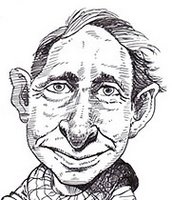 Continuing on the royalty linked to Bun Heang Ung theme, here's another couple of look-alikes. This time its Prince Charles, the future King of England and well-known for his large ears, and yours truly, in a cartoon drawn by Bun Heang Ung. I'm actually well known for my very small ears (and big nose)
Continuing on the royalty linked to Bun Heang Ung theme, here's another couple of look-alikes. This time its Prince Charles, the future King of England and well-known for his large ears, and yours truly, in a cartoon drawn by Bun Heang Ung. I'm actually well known for my very small ears (and big nose) but as soon as I saw this cartoon I thought of Prince Charles, so I had to post it. I'll leave you to work out which one the cartoon figure is. I can confirm however, that I will not be playing the role of Charles in the forthcoming film of his life - I didn't make it through the auditions.
but as soon as I saw this cartoon I thought of Prince Charles, so I had to post it. I'll leave you to work out which one the cartoon figure is. I can confirm however, that I will not be playing the role of Charles in the forthcoming film of his life - I didn't make it through the auditions.
